12 Tourism Trends That Will Shape the Travel Industry in 2022 and Beyond

Table of Content
1. bleisure travel, 2. automation, 3. mobile bookings, 4. personalization, 5. tech-empowered travel, 6. sustainable tourism, 7. active ecotourism, 8. transformative travel, 9. experience tourism, 10. wellness travel, 11. longer trips, 12. staycation.
With travelers’ desire for new experiences, the rapid global technological advancements, climate change, and other dynamics, the travel and tourism industry is constantly transforming.
Having experienced an all-time high in the past decade, with 2018 recording the highest international tourist arrival, according to the World Tourism Organization (UNWTO) , the sector is now undeniably faced with big challenges and uncomfortable changes following the COVID-19 pandemic.
All the same, there are still rising tourism trends that can help tour operators , Destination Marketing Organizations (DMOs) , and other industry suppliers to revamp their businesses and experience success as we get into the new normal.
From experiential and transformative travel to automation and Bleisure trips, there are new opportunities companies should focus on.
In this article, we’ll go through the top tourism trends right now and highlight how leisure businesses can stay on top of their game and rebuild tourism for the future.
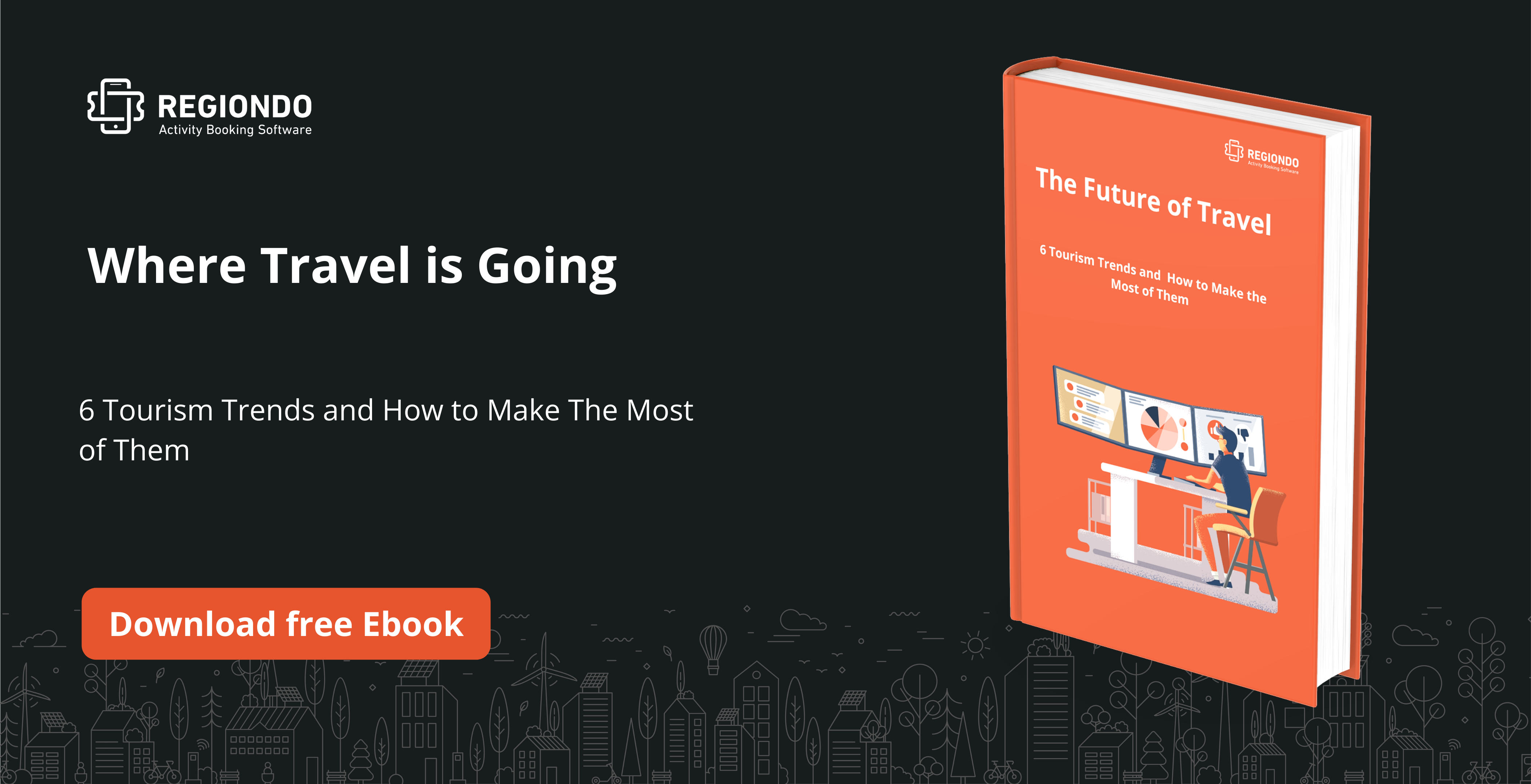
Bleisure travel is a growing tourism trend where people extend their business travel to leisure activities. Experts predict it will continue to grow in the mobile workforce. Although business travel has started to make its comeback in 2021, bleisure is believed to be its future.
A 2018 study revealed that 60% of U.S. business trips incorporated leisure elements, an increase from 43% in 2016.
These business-leisure trips can either be pre-planned, whereby clients schedule their vacation within the same period of a job-related trip. Companies may also offer their workers some tourist experiences during work trips.
On the other hand, this can come as an afterthought. Once the meetings, professional conferences, and other work engagements are over, business travelers may decide to extend their stay and explore their destination.
There is also a growing trend among millennials known as the “digital nomad” phenomenon. This is whereby online workers and freelancers adopt the lifestyle of traveling as they work.
As a tour operator, you can take advantage of this growing trend by creating offers that entice business travelers to extend their stay for leisure. For example, you can sell team retreat packages combined with perks like photos, videos, and transportation.
Having wifi and chargers in buses and accommodation (for multi-day tours) can also entice digital nomads and other travelers looking to stay connected for work.
Gone are the days when booking a trip required clients to make a phone call, speak directly to a service provider, or walk into the supplier’s office for face-to-face negotiation.
Digitization has led to a rise in online bookings. Not only has this made advertising cheaper for travel companies , but also customers are enjoying and increasingly prefer the convenience it offers.
Tour and activities companies have also progressively adopted technology and online booking. In 2019, 71% of operators surveyed were using reservation technology in their businesses, a marked increase from just 25% in 2010. More to that, these companies experienced faster growth plus higher profitability.
Booking systems help tour & activity providers automate their processes and be more effective by adopting cutting-edge technologies. Long gone are the days when you are using spreadsheets, pen and paper to manage your reservations: booking systems do it all automatically, save your time and money. For example, Regiondo booking system has won European travel market by providing seamless reservation experience, flexibility and innovations to businesses of any size.

As we approach the post-COVID period, automation in the sector is bound to continue rising. The increasing digitalization of tourism also generates new business opportunities and promotes the sustainable development of the sector. So as you work on getting back to profitability, take advantage of this tourism trend, and set up the right technology in order to increase your chances of faster recovery.
Another important aspect when it comes to digitization is mobile bookings .
Operators report that 2 in 5 online bookings are made on mobile devices. These smartphone shoppers are also more valuable to your business because of the following reasons:
- They spend 50% more on tours and activities per trip.
- They average 2.9 tours per trip.
- They are twice as likely to leave online reviews .
Source: Arival Travel
According to Think with Google , 57% of travelers believe that companies should personalize their buying experience and base it on their behaviors, personal preferences, and past choices.
Personalization is also important when it comes to the actual tour or activity. By offering flexible experiences that can be tailored to a traveler’s needs, you stand a chance of better satisfying your clients, and that can lead to repeat visits. Your priority should, therefore, be on offering customer-oriented services.
It starts right from the time they see your advert on social media or your website. The messaging should resonate with what the client prefers. Travel and tour suggestions can be offered according to, for instance, what the customer has been browsing on the internet. This is possible to set up using specialized marketing tools and ad platforms like Google and Facebook.
You are better placed by factoring this into your company’s digital marketing strategy. How do you get started? Reach out and speak to your customers to learn about their preferences , characteristics, behavior, and individual needs.
All in all, staying on top of this tourism trend can be the distinction that will make your company stand out from competitors and gain back profitability faster.
We already talked about automation and mobile bookings as some of the future trends in the tourism sector. But existing and emerging technologies will continue to influence travel in many other ways.
A recent Amadeus survey states that technology and innovation seem to be key in building traveler confidence and they will increase willingness to travel in the next 12 months.
Technologies proved to be crucial in the post-pandemic world where international tourists need to present Digital COVID Certificates or fill out travel documentation. What is more, people need instant access to information and help when being abroad.
In the coming year, tech innovations will continue to bring ease to the travel experience. The top five technologies that would increase confidence to travel in the next 12 months are:
- Mobile applications that provide on-trip notifications and alerts (44%)
- Self-service check-in (41%)
- Contactless mobile payments, e.g., Apple Pay (41%)
- Automated and flexible cancellation policies (40%)
- Mobile boarding (40%)
In addition to supporting people throughout their journey, technologies made innovative solutions possible. Virtual tours, experiences, and classes gained significant popularity during the lockdowns, and thanks to tech innovation, many businesses survived the crisis.
The first step for technology-empowered travel experience is a website. However, to make sure your customers can easily find you in the search engines, it is important to care about your SEO metrics. Try our free SEO Grader tool to learn how your website performs and get free recommendations on how you can improve it.

Following the COP 26 UN Climate Change Conference and the launch of The Glasgow Declaration on Climate Action , countries are urged to accelerate climate action in tourism. So encouraging sustainable tourism practices and environmental initiatives is of utmost importance for the resilience of the sector.
The UNWTO Secretary-general has warned that the “climate emergency is a bigger threat than Covid”. As international travelers become aware of this crisis, they come to believe that people need to take action now and make sustainable travel choices in order to save the planet and preserve it for future generations.
More travelers are adopting this mindset hence making their travel decisions with the environment in mind.
But it’s important to note that sustainability is not only about the environment. It’s also about making a positive impact on cultures, economies, and the people at the destinations that clients visit.
In the post-COVID-19 era, sustainability will be a continuous trend in travel and tourism. If you play your part in upholding sustainability, you can earn the trust and loyalty of the generation of travelers who are spearheading this trend.
Active Ecotourism is another trend that has emerged in response to the calls for more sustainable and thoughtful tourism. It encourages combining the passion for travel with direct involvement in conservation and supporting the local environment.
According to a recent Amadeus survey on rebuilding travel, people consider cost-effective sustainable travel a priority.
37% of travelers surveyed think opportunities for travelers to be involved in the preservation of tourist destinations will help the industry to become more sustainable in the long term.
According to Evolve’s 2022 travel forecasts , 58% of people will be more interested in exploring the outdoors and practicing relevant activities including hiking, biking , and kayaking . Mountain/rural escapes and waterfront getaways are expected to be popular vacation experiences in 2022.
Covid-19 has drawn our attention to the negative impact of travel on the global environment and initiated a promise for ‘coming back better’. So the tourism industry will continue this trend by promoting sustainable outdoor travel and ecotourism in the post-pandemic era.
This is a new tourism trend that’s quickly gaining popularity. Transformative travel is about not just traveling for leisure but also aiming to make a difference in both the lives of others and oneself.
Volunteering trips are an example of the experiences that have gained popularity from this trend. Travelers vacation and also set aside time to volunteer at their travel destinations.
When it comes to making a difference in their own lives, clients can opt to go for wellness holidays where they retreat and either join a yoga class, relax at a nature-filled destination, or attend some apprenticeship classes to learn a new skill.
Because of this trend, there is also a notable change in the travelers’ diet. Instead of indulging in unhealthy meals, those who’ve joined the organic food movement prefer places that offer highly nutritious and organic foods.
One of the main aims of transformative travel is to be involved in something that’s significant and adds purpose to the trip. Booking.com shares that 68% of global travelers would consider participating in cultural exchanges to learn a new skill, followed by a volunteering trip (54%) and international work placements (52%).
Based on this trend, tour operators can focus on offering unique and purposeful activities along with their usual products and services.
Experience tourism is on the rise . This trend is about having a once-in-a-lifetime experience or gaining an emotional connection with cultures and nature.
As travelers get tired or bored of cookie-cutter vacations in touristy hot spots, they begin looking for an authentic experience in their travel destination. They can easily go for a brand that will allow them to mingle with the locals and experience the culture of the people.
Harris Group did a study that revealed that 72% of millennials prefer spending more money on unique experiences rather than on material things.
So, if you can offer these experiences, then you’re well on your way to acquiring this increasing breed of clients. One of the most popular experiences is food sampling. Food tourism enables travelers to enjoy different local cuisines, maybe even learn how to cook some of the recipes, and interact with the people’s traditions in the process.
Another way clients want to experience their destinations is by staying with local families rather than in hotels. This gives them a chance to interact even closer with the locals and see their way of life.
These are travelers looking for an enriching experience with the primary purpose of achieving, promoting, or maintaining the best health and sense of well-being and balance in life.
But don’t think wellness travel is limited to resorts and spas. Almost any business can take advantage of this trend.
Think of how you can market your business offers as a way to contribute to wellness tourism by developing and promoting communities and showing how both tourists and locals can benefit.
For example, a helicopter tour, paragliding flight, or whatever fun adventure your company offers, is a chance for personal growth by conquering fears or expanding horizons. Your existing offers may give the chance for people to empower themselves by learning a new skill set which also encourages personal growth.
With international travel returning to some degree, tourists are starting to dream about extended long-distance trips again. While countries are advocating for less air travel, this trend will allow people to travel less but better.
According to Evolve’s 2022 travel forecasts , the average trip will likely be longer in length (5-7 nights in 2022, compared to an average of 3.8 nights in both 2020 and 2021).
Longer trips will be increasing in demand as a result of the many work-from-home opportunities too. A study by Envoy finds that the hybrid work model gives employees more flexibility to get work done when they’re most productive.
So those who work remotely are more likely to plan extended stays in 2022 and beyond.
Staycation is another trend that gained popularity during the pandemic. It represents a holiday spent in one’s home country or home rather than abroad. Often involves day trips for exploring local attractions and activities. This type of vacation is ideal for people who are feeling the need of escaping out of their homes but want to avoid the ongoing Covid-19 regulations.
New research suggests that the trend will continue into 2022 despite the easing of international travel restrictions. This is because tourists want to support their local markets well as feel secure and safe in their holiday environment.
So small tour/activity businesses and accommodation providers can rest assured that there will be a constant stream of visitors during the years to come.
As a tour operator or DMO, it’s best to keep an eye on these tourism trends and begin strategizing. These include:
- The merging of business and leisure travels
- Increasing automation
- Mobile bookings
- Personalization of trips
- Tech-Empowered Travel
- Active ecotourism
- A focus on sustainable tourism
- Transformative travel
- Experience tourism
- Wellness travel
- Longer trips
- Staycations
Have a plan of how to meet the needs of your clients and take advantage of these trends. This can be the much-needed headstart to help you emerge above your competition as you seek to recover from the consequences of the pandemic.
You might also like:
- The Rise of Bleisure Travel and How to Make the Most of it
- Travel Like a Local: How Tour Operators Can Make the Most of This Trend
- Health Tourism in the EU: Facts and Figures
- Virtual Reality in Travel: 9 Applications for Tours, Destinations & Activities
- The Rise of Solo Travel and How to Make the Most of it
- When Numbers Matter: The Travel Statistics You Need to Know About
- The Rise of Experience Tourism and What It Means for the Leisure Industry
Related Articles
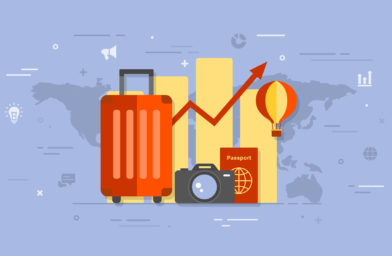
- Tips & tricks
- Trends 2024

Stay updated with Regiondo by signing up for our Newsletter

Get a personalized demo or create your free account now
Take your business to the next level with Regiondo - it's free to get started and you don't need a credit card.
- Share full article
Advertisement
Supported by
Travel’s Theme for 2022? ‘Go Big’
With Omicron cases ebbing, the industry is looking for a significant rebound in spring and summer. Here’s what to expect, in the air, at the rental car counter and beyond.

By The New York Times
As governments across the world loosen coronavirus restrictions and shift their approach to accepting Covid-19 as a manageable part of everyday life, the travel industry is growing hopeful that this will be the year that travel comes roaring back.
Travel agents and operators have reported a significant increase in bookings in recent weeks for the upcoming spring and summer seasons. The World Travel & Tourism Council (W.T.T.C.), which represents the global travel and tourism industry, projects that travel and tourism in the United States will reach prepandemic levels in 2022, contributing nearly $2 trillion to the U.S. economy. The council also anticipates outbound travel from the United States will increase; it projects bookings over the Easter holiday period to be up by 130 percent over last year.
“Our latest forecast shows the recovery significantly picking up this year as infection rates subside and travelers continue benefiting from the protection offered by the vaccine and boosters,” said Julia Simpson, the president and chief executive officer of the W.T.T.C. “As travel restrictions ease and consumer confidence returns, we expect a welcome release of pent-up travel and demand.”
While uncertainty remains over the course of the pandemic and government policies on mask mandates and testing requirements for travel, the industry is seeing a strong desire among travelers to take big bucket list trips this year, particularly to far-flung international destinations and European cities.
“Travel is no longer just about ‘going somewhere,’” said Christie Hudson, a senior public relations manager for Expedia. “Coming out of such a long period of constraints and limitations, 2022 will be the year we wring every bit of richness and meaning out of our experiences.”
Here are some of the trends you can expect to see.

Air Travel: Fewer restrictions, but for now the masks stay on
Flying in 2022 looks poised to be much like flying in 2021: reminiscent of prepandemic normal at times, infuriating at others. A primary difference is that there will be more people on planes and in airports — 150 percent as many passengers are expected to fly this year as did last year, according to The International Air Transport Association , which represents nearly 300 airlines.
In terms of where you can fly, you’ll have more options than last year. Destinations that have long been closed to most travelers, including Australia, the Philippines and Bali, have started reopening. Airlines have been gradually adding back old routes and expanding with new ones. In the spring, American Airlines, for example, plans to add six new routes from Boston. JetBlue will soon fly direct from New York City’s John F. Kennedy International Airport to Kansas City and Puerto Vallarta, Mexico, among other locations.
You’ll still need to check the latest entry requirements before flying internationally. There are currently more than 100,000 health and travel restrictions in place, according to Meghan Benton , a research director at the Migration Policy Institute, which tracks them. Though that’s around the same number as a year ago, she noted, there has been a move away from quarantines and outright bans of nonessential visitors toward vaccination and testing requirements. Recently, a growing number of destinations, including Britain, have also reconsidered the merits of entry testing.
That flight for a summer getaway could cost less than it did before the pandemic. Fares are down 18 percent from 2019, according to Airlines for America, which represents seven major airlines. In January, the cost of international airfares purchased hit an all-time low since Hopper, a booking app, began tracking them in 2014. Predicting whether, when and where they will rise is harder than it was before the pandemic, however, as new variants, evolving health threats, travel restrictions and pandemic psychology have upended traditional pricing patterns. Fortunately, most airlines are continuing to waive flight change fees on all but basic economy flights, said Brett Snyder, the founder of Cranky Flier , an airline industry site.
When flying in the United States, everyone will need to wear a mask until at least late March. That’s when the federal mask mandate is set to expire. It has been extended before and could be extended again. Dr. Anthony Fauci, the White House’s chief medical adviser, is among those who have said that masks on planes should be here to stay. Gary Leff, who writes about air travel for View from the Wing, a site focused on air travel, said he agrees with the betting markets , which predict that the mask mandate will go away by the November midterm elections. Regardless, there will be more alcohol in the air. On Feb. 16, Southwest will serve drinks for the first time in two years. — Heather Murphy
Lodging: Hotels fight back, sometimes with robots
This may be the year travelers return to hotels. In a report for the American Hotel & Lodging Association, Oxford Economics, an economic forecasting company, expects total bookings to nearly equal 2019 stays, though a significant source of revenue — more than roughly $48 billion spent before the pandemic on food and drink, meeting spaces and more — will largely remain missing, given the continued slump in business meetings and group events.
Leisure travelers have kept the industry afloat and in certain areas — especially mountain and coastal destinations — vacation business is booming. With record demand, rates rose at escapist resorts like the Chebeague Island Inn in Maine even in the traditional off-season months.
Now, corporate lodging specialists like Level Hotels & Furnished Suites , which has high-rise apartments in four cities including Seattle, are going after leisure travelers, touting amenities like fitness centers. And why not? During the pandemic, many travelers discovered the privacy offered by rental residences. According to AirDNA , which analyzes the short-term rental market, vacation home bookings were up between 30 and 60 percent in small cities and resort destinations compared to 2019, though big-city rentals are down about 25 percent.
Urban hotels hope to compete for digital nomads by adding stylish extended-stay properties, social attractions and better work spaces. Denver’s Catbird hotel offers ergonomic studios with kitchenettes, plus a rooftop bar and rental gear, including scooters, ukuleles and air fryers. The Hoxton chain’s Working From co-working spaces are attached to its hotels in Chicago and London.
Adapting to lean times, many hotels have outsourced operations beyond laundry and landscaping, into food and recreational services. The new app-based service Breeze works with hotels to provide room service either from on-site restaurants or neighboring ones.
The pandemic has also hastened the adoption of automation in hotels — such as keyless check-in, digital staff communication and room delivery by robots — as a cost-effective response to the labor shortage.
“High tech is the new high touch,” said Chekitan Dev, the Singapore Tourism Distinguished Professor of marketing and management at Cornell University’s hotel school.
Hotel sustainability initiatives look to go further than “towel-washing optional” offers.
Hilton plans to introduce what it says is the country’s first net-zero hotel this year with the solar-powered Hotel Marcel New Haven, Tapestry Collection in New Haven, Conn. SCP Hotels , which operates seven hotels around the country, aims to go zero-waste in 2022.
The industry’s focus on leisure travelers may inspire new diversions. A hotel that can no longer afford to employ 50 servers in its events department might use the space to hold a yoga class or a talk by a local designer, according to Vikram Singh, an independent hotel consultant. “These are the experiences people remember more than whether the pillow was soft,” he said. — Elaine Glusac
Rental Cars: Still pricey, and hard to get
This time last year, Jonathan Weinberg, the founder and chief executive of AutoSlash , an online service that makes and tracks discount car rentals, noticed that rental vehicles were unexpectedly scarce and overpriced for the mid-February Presidents’ Day break, an early indication of the post-vaccine travel rebound.
In 2022, it’s looking worse. A Feb. 1 search in Phoenix for the upcoming holiday weekend showed all the major car rental companies were sold out and just two smaller agencies, Sixt and Nu, had cars, starting at $130 a day, more than twice what they might have been prepandemic.
“Even last year, we didn’t see inventory this tight until a week or so out,” Mr. Weinberg said.
It’s possible that consumers have heeded the advice to book cars early after last year’s shortages. But rental agencies still haven’t been able to expand their fleets — thanks largely to slowdowns in automotive manufacturing — and the anticipated return of travel after Omicron suggests more car trouble ahead.
“It doesn’t look like it’s going to improve at all in the next year,” said Mike Taylor, the senior travel analyst at J.D. Power, a market research company, noting that in addition to higher prices, renters may be getting older cars with high mileage.
According to the travel search engine Kayak , rental car rates last summer peaked in July at a national average of $119 a day. Currently, the national average is about $66, or 27 percent higher than last year at this time, and a 41 percent increase over 2019 for the same period. Searches have more than doubled compared to this time last year.
“Road-tripping is a more predictable way of travel these days, where you can avoid crowds and unexpected delays,” said Matt Clarke, the vice president of North American marketing for Kayak, which recently added search results from companies like Kyte , a car rental company that delivers cars to consumers, and Turo , a car-sharing site.
Such alternatives may have benefited from the rental car crunch. In the first nine months of 2021, revenue at Turo grew more than 200 percent, compared to the same period in 2020, according to a recent filing to go public.
“For many travelers, Turo was the least crazy option from a price standpoint,” said Turo’s chief executive Andre Haddad.
For now, car-sharing sites are better bets for finding electric vehicles, although Hertz announced in the fall that it would have 100,000 E. V.s by the end of this year. At Turo, E.V. listings have grown from about 200 in 2014 to more than 27,000 in 2021.
“We’re already seeing activity for March and April, and that is not normal,” said Ryan Hagler, a Maui resident who uses Turo to rent 10 vehicles, including six Teslas, which start around $80 a day. “I’m assuming it’s going to be pretty busy this year.” — Elaine Glusac
Destinations: Cities are back
This March, Virginia Devlin of Chicago is headed to New York City with her daughter, a musical theater student, to celebrate two years’ worth of missed birthday trips. They’ll see Broadway shows and visit Chinatown for dim sum. Tracy Lippes, of Short Hills, N.J., is ready to go to Paris. “I can’t wait to stay in a beautiful hotel, shop, visit museums and eat at great restaurants,” Ms. Lippes said of her March trip. Greg Siskind, an immigration attorney in Memphis, is thrilled to have an in-person conference in London next month, and plans to arrive a few days early to enjoy the city with his adult daughters.
Yes, city travel is back. After more than two years of avoiding urban centers, travelers are eager to return to their favorite metropolis and swan dive into the sights, bites and sounds of a city that is not their own.
“It was a lift to everyone when the U.K. dumped Covid mandates on Jan. 26,” said Henley Vazquez, a co-founder of FORA, a travel agency in New York City . “Bookings are spiking for classic European destinations, particularly Paris and London. Clients want to reconnect with special hotels and restaurants and simply bask in the culture.”
In the United States, Shawna Owen, the president of Huffman Travel , a Chicago-based agency that specializes in luxury and family travel, is planning long weekend trips to New York City. “New York is buzzing again and clients are excited to dine at hot spots and enjoy the city’s dynamism.”
Underscoring the New York-is-back trend, the travel booking site Skyscanner reports that New York City is its top booked domestic destination so far in 2022 and the online travel agency Expedia has had a 13 percent increase in searches for New York City.
As for Europe, Paris and London are the top searched international destinations on Scott’s Cheap Flights , a service that tracks flight deals. Hotel searches on Expedia jumped 62 percent for London and 51 percent for Paris since Jan. 1, and the mobile app Hopper reports that London and Paris clock in as two of the most searched international destinations for spring 2022.
With restrictions easing, Four Seasons Hotels and Resorts reported an 80 percent increase in its bookings in Paris, London and New York from December to Jan. 16.
In London, the luxury travel outfit, Noteworthy , has seen bookings of its private tours to iconic British sites increase 145 percent in February over the same time in 2021. “ The Queen’s Platinum Jubilee has definitely been a tourist draw,” said Nicola Butler, the company’s owner and managing director. — Amy Tara Koch
Resorts: All-inclusives, beyond the beach
A new breed of domestic resort is pioneering an almost all-inclusive model, taking the guesswork out of where to eat and what to do. Why “almost?” These properties don’t include alcoholic beverages in their nightly rate, and, perhaps fittingly, boast enviable wine and spirits collections. A major catalyst for the trend: pandemic-scarred travelers wary of leaving the grounds of a resort once they arrive, according to Erina Pindar, the managing director of SmartFlyer , a luxury travel agency. “The almost all-inclusive is incredibly popular,” she said, “we expect demand to continue to be strong.”
Hotels.com reports that searches for this type of resort have increased significantly compared with the same time frame in 2019. “After the stress of the last few years,” said Mel Dohmen, a Hotels.com spokeswoman, “travelers are looking for stays where they can be doted on.”
“Our clients see these resorts as a hassle-free option,” said Jennifer Doncsecz, president of the travel agency V.I.P. Vacations .
The San Ysidro Ranch in Montecito, Calif., long beloved by luminaries like Winston Churchill and Vivien Leigh, pivoted to an almost-all inclusive model in 2020. In addition to folding the cost of meals into the nightly rate, which starts at $2,495, it did away with extraneous charges like resort fees and parking. “We figured, with all the charges we’ve gotten rid of, what are people going to spend money on? Wine,” said Ian Williams, the Ranch’s general manager. “We’ve had no complaints. This past year has been our busiest ever.”
Given the complications caused by the pandemic, Mr. Williams and his team sought to streamline the travel process. “We want guests to check out and spend their trip home talking about what an amazing vacation they had,” he said, “not some miscellaneous charge on their bill.”
Beachside buffets and watered down margaritas might rule at the traditional all-inclusive; not at the Ranch. “Every guest, if they want the Wagyu for dinner, fine,” said Mr. Williams. “Caviar? Great. Maine lobster? No problem.”
When High Hampton , a Cashiers, N.C., resort that dates back to 1933, remodeled in 2020, it folded breakfast and dinner into its nightly rate, which starts at $595, “because it removes that pressure of where to dine next,” said Scott Greene, the resort’s general manager. (The amber-lit, oak-paneled dining room is always the right answer.)
The same logic has long been in place at Blackberry Farm and Blackberry Mountain , two resorts in Walland, Tenn. Breakfast, lunch and dinner are included in the nightly rate — $845 and up at the Farm, $1,395 and up at the Mountain —- along with all the snacks in the minibar. “We’re exceeding prepandemic occupancy,” said Matt Alexander, Blackberry’s president. SmartFlyer saw a 327-percent increase in revenue from bookings at the two properties in 2021 as compared to 2019. — Sheila Yasmin Marikar
Wellness: Sexual healing
Sexual wellness is one of the fastest growing corners of the global wellness industry, with travel increasingly part of the experience. More hotel brands and relationship therapists are offering couples retreats and beachfront sessions with intimacy coaches and guided anatomical explorations to meet the needs of travelers seeking greater couple satisfaction and personal pleasure.
“People still have stigma around couples therapy and coming to therapy, but nobody ever had a problem going on vacation,” said Marissa Nelson, a sex therapist who runs retreats in Barbados, Hawaii, St. Lucia and Washington, D.C., through her company IntimacyMoons (seven days in St. Lucia starts at $7,500). She also offers virtual sessions; even when retreats were shut down in 2020, she noticed couples were traveling — to Airbnbs or on road trips — before logging on to work with her.
Travel is a powerful tool for unlocking intimacy, said Shlomo Slatkin, a rabbi and certified relationship therapist. His company, The Marriage Restoration Project , focuses on married couples. In the past year, in response to a growing demand to combine therapy and travel, he has introduced his first destination retreats — which cost between $4,000 and $5,000 and take place in Costa Rica, Mexico and Miami.
“Going away is really powerful, because changing the relationship requires a paradigm shift,” he said. “The lockdowns brought out a lot of maintenance issues in relationships that need to be addressed.”
Tara Skubella, a tantric guide, works with both couples and single women. Tantra, a spiritual philosophy with roots in medieval India, includes practices like tantric sex, and Ms. Skubella offers services, including chakra work, which focuses on energy points in the body. Her retreats in Costa Rica and Colorado (starting at $499) have been mostly sold out since 2020, she said.
“It seems very aligned to Covid and breaking out of isolation,” she said. “Society is realizing tantra isn’t only about sex, but about inner connection and healing.”
In March, the hotelier St. Regis will launch a retreat with the sex coach Bibi Brzozka on intimacy, conscious sexuality and emotional awareness at the St. Regis Punta Mita Resort in Mexico ($2,680). In April, Six Senses Ibiza will host Pleasure Principles — Journey of Women’s Sexual Wellness , a six-night stay focusing on female sexual empowerment ($4,500). They are the first sexuality-focused retreats for both brands. — Debra Kamin
Family Travel: Going on the edu-vacation
After two years of quarantines and classroom closures, millions of children across the country have fallen behind in class . And parents, eager for lesson plans that can supplement learning, are now seeking experiences with an educational bent when they travel.
“Previously, families didn’t ask in advance about what educational activities are available at the resorts. Now they do,” said Chitra Stern, founder and chief executive of the family-friendly Martinhal resorts in Portugal. Nearly half of her new bookings, Ms. Stern said, now include questions about on-site educational opportunities for children. Last year, the luxury resorts began partnering with the United Lisbon International School to offer a two-week educational summer camp for its younger guests at Martinhal Lisbon. Courses, which are available for children ages 3 to 17, begin at 440 euros (around $500).
After a pandemic dip, enrollments are on the rise for family-learning itineraries with the tour operator Road Scholar , which produces educational travel programs for all ages. Options for children and their caregivers, which start at $699 per adult and $449 per child, include combining history and geography with spotting grizzlies in the Canadian Rockies , or learning French while taking a scavenger hunt through Paris’s Louvre .
And noting an uptick in children road tripping with their parents, the Colorado Tourism Office last summer launched Schoolcations , a series of free itineraries based on Colorado road trips and designed for grades K-5.
There are also more opportunities to learn back at the hotel. Family Coppola Hideaways — a group of retreats owned by the film director Francis Ford Coppola — now offers the Coppola Curriculum at its properties in Belize and Guatemala. Half-day lessons cost $150 per day for children and include courses in science (like counting bird species) and art (like local textile looming). In Florida, Isla Bella Beach Resort and Oceans Edge Resort & Marina now partner with Marine Science Camp for classes with marine scientists, geared to elementary school children (free for hotel guests). In California, attendance at the Artisans in Residence program at Carmel Valley Ranch — taught in the apiary, organic garden and goat creamery, and starting at $85 for adults and $65 for children — has doubled.
For some, a desire for extra credit also means going for an extra splurge. At the luxury travel agency Black Tomato , bucket-list family travel now accounts for 55 percent of bookings, with the majority of requests falling into what the company defines as BFG travel: Big Family Get-Togethers. So the company has rolled out a family-focused education track, Field Trip , which begins at around $5,800 per person; courses include a physics lesson at the CERN laboratory in Switzerland and a social studies-focused hike through Bhutan’s Gangtey Valley to meet a revered monk.
“Thematically, for 2022 family bookings, it’s all about intrepid adventure mixed with cultural immersion, ecological outdoor experiences, intrepid luxury hotels and even pop-up glamping setups — definitely bucket-list and remote,” said Tom Marchant, Black Tomato’s owner and co-founder. — Debra Kamin
Cruises: Smaller boats and luxury destinations
After two years of devastating losses and a tentative restart last June, the cruise industry has faced a challenging start to 2022, as the highly transmissible Omicron variant of the coronavirus caused cases to surge onboard ships, forcing some cruise lines to cancel voyages and change itineraries.
But demand for future cruises is still high, especially among dedicated cruise fans. A recent survey on cruiser sentiment by the online review site Cruise Critic found that 52 percent of the 6,400 cruisers surveyed were currently looking to book a cruise, with 40 percent hoping to set sail in the next six months.
A 2022 report on the outlook for the industry, published in January by the Cruise Lines International Association, the industry’s trade group, highlighted how major companies are bouncing back from the pandemic despite recent hurdles.
More than 75 percent of CLIA member ships have returned to service, with 100 percent expected to restart operations by August 2022. Additionally, 16 new cruise ships from major lines like Carnival, MSC, Royal Caribbean and Disney will launch in 2022.
One of the biggest cruise trends for 2022 is luxury expedition voyages, appealing to a growing number of travelers throughout the pandemic because they typically sail on smaller ships and steer away from crowded destinations.
“The itineraries vary pretty significantly from those of the larger, more mainstream lines,” said Colleen McDaniel, the editor in chief of Cruise Critic. “Due to their size, luxury ships are able to sail to more remote destinations — so even if you’re sailing in the Caribbean, your ports of call will likely be further removed from the masses, and likely somewhere you might have never been before.”
Smaller river and expedition cruises are also expected to become more popular this year as cruisers seek out big bucket-list destinations and more sustainable ways to travel. Responding to the demand, Hurtigruten, a Norwegian line that specializes in expedition cruises, has added new itineraries to its Galápagos Islands excursions, offering a range of small-ship carbon-neutral expedition sailings that will cover the full span of the remote 19-island archipelago.
“A very positive trend we’ve seen throughout the pandemic is that travelers are increasingly eco-conscious; meaning they do their homework on brands, including cruise ships, to make sure they align with their personal values.” said Daniel Skjeldam, the chief executive of Hurtigruten Group.
The company is also expanding its grand expedition cruise program, offering three unique cruises from the North to South Pole after the success of two similar sold-out sailings scheduled for the fall. The itineraries include destinations like Alaska, Iceland, Greenland, the Northwest Passage sea route, South America and Antarctica.
“After having been isolated for two years, people really want to do something they really can look forward to,” Mr. Skjeldam said. “Something perhaps more active and interesting than their normal prepandemic holiday.” — Ceylan Yeginsu

52 Places for a Changed World
The 2022 list highlights places around the globe where travelers can be part of the solution.
Follow New York Times Travel on Instagram , Twitter and Facebook . And sign up for our weekly Travel Dispatch newsletter to receive expert tips on traveling smarter and inspiration for your next vacation. Dreaming up a future getaway or just armchair traveling? Check out our 52 Places for a Changed World for 2022.
An earlier version of this article mischaracterized Kyte, a car rental business. Kyte is a car rental company that delivers cars to consumers; it is not a car-sharing website.
How we handle corrections
Come Sail Away
Love them or hate them, cruises can provide a unique perspective on travel..
Cruise Ship Surprises: Here are five unexpected features on ships , some of which you hopefully won’t discover on your own.
Icon of the Seas: Our reporter joined thousands of passengers on the inaugural sailing of Royal Caribbean’s Icon of the Seas . The most surprising thing she found? Some actual peace and quiet .
Th ree-Year Cruise, Unraveled: The Life at Sea cruise was supposed to be the ultimate bucket-list experience : 382 port calls over 1,095 days. Here’s why those who signed up are seeking fraud charges instead.
TikTok’s Favorite New ‘Reality Show’: People on social media have turned the unwitting passengers of a nine-month world cruise into “cast members” overnight.
Dipping Their Toes: Younger generations of travelers are venturing onto ships for the first time . Many are saving money.
Cult Cruisers: These devoted cruise fanatics, most of them retirees, have one main goal: to almost never touch dry land .
Travel, Tourism & Hospitality
Global tourism industry - statistics & facts
What are the leading global tourism destinations, digitalization of the global tourism industry, how important is sustainable tourism, key insights.
Detailed statistics
Total contribution of travel and tourism to GDP worldwide 2019-2033
Number of international tourist arrivals worldwide 1950-2023
Global leisure travel spend 2019-2022
Editor’s Picks Current statistics on this topic
Current statistics on this topic.
Leading global travel markets by travel and tourism contribution to GDP 2019-2022
Travel and tourism employment worldwide 2019-2033
Related topics
Recommended.
- Hotel industry worldwide
- Travel agency industry
- Sustainable tourism worldwide
- Travel and tourism in the U.S.
- Travel and tourism in Europe
Recommended statistics
- Basic Statistic Total contribution of travel and tourism to GDP worldwide 2019-2033
- Basic Statistic Travel and tourism: share of global GDP 2019-2033
- Basic Statistic Leading global travel markets by travel and tourism contribution to GDP 2019-2022
- Basic Statistic Global leisure travel spend 2019-2022
- Premium Statistic Global business travel spending 2001-2022
- Premium Statistic Number of international tourist arrivals worldwide 1950-2023
- Basic Statistic Number of international tourist arrivals worldwide 2005-2023, by region
- Basic Statistic Travel and tourism employment worldwide 2019-2033
Total contribution of travel and tourism to gross domestic product (GDP) worldwide in 2019 and 2022, with a forecast for 2023 and 2033 (in trillion U.S. dollars)
Travel and tourism: share of global GDP 2019-2033
Share of travel and tourism's total contribution to GDP worldwide in 2019 and 2022, with a forecast for 2023 and 2033
Total contribution of travel and tourism to GDP in leading travel markets worldwide in 2019 and 2022 (in billion U.S. dollars)
Leisure tourism spending worldwide from 2019 to 2022 (in billion U.S. dollars)
Global business travel spending 2001-2022
Expenditure of business tourists worldwide from 2001 to 2022 (in billion U.S. dollars)
Number of international tourist arrivals worldwide from 1950 to 2023 (in millions)
Number of international tourist arrivals worldwide 2005-2023, by region
Number of international tourist arrivals worldwide from 2005 to 2023, by region (in millions)
Number of travel and tourism jobs worldwide from 2019 to 2022, with a forecast for 2023 and 2033 (in millions)
- Premium Statistic Global hotel and resort industry market size worldwide 2013-2023
- Premium Statistic Most valuable hotel brands worldwide 2023, by brand value
- Basic Statistic Leading hotel companies worldwide 2023, by number of properties
- Premium Statistic Hotel openings worldwide 2021-2024
- Premium Statistic Hotel room openings worldwide 2021-2024
- Premium Statistic Countries with the most hotel construction projects in the pipeline worldwide 2022
Global hotel and resort industry market size worldwide 2013-2023
Market size of the hotel and resort industry worldwide from 2013 to 2022, with a forecast for 2023 (in trillion U.S. dollars)
Most valuable hotel brands worldwide 2023, by brand value
Leading hotel brands based on brand value worldwide in 2023 (in billion U.S. dollars)
Leading hotel companies worldwide 2023, by number of properties
Leading hotel companies worldwide as of June 2023, by number of properties
Hotel openings worldwide 2021-2024
Number of hotels opened worldwide from 2021 to 2022, with a forecast for 2023 and 2024
Hotel room openings worldwide 2021-2024
Number of hotel rooms opened worldwide from 2021 to 2022, with a forecast for 2023 and 2024
Countries with the most hotel construction projects in the pipeline worldwide 2022
Countries with the highest number of hotel construction projects in the pipeline worldwide as of Q4 2022
- Premium Statistic Airports with the most international air passenger traffic worldwide 2022
- Premium Statistic Market value of selected airlines worldwide 2023
- Premium Statistic Global passenger rail users forecast 2017-2027
- Premium Statistic Daily ridership of bus rapid transit systems worldwide by region 2023
- Premium Statistic Number of users of car rentals worldwide 2019-2028
- Premium Statistic Number of users in selected countries in the Car Rentals market in 2023
- Premium Statistic Carbon footprint of international tourism transport worldwide 2005-2030, by type
Airports with the most international air passenger traffic worldwide 2022
Leading airports for international air passenger traffic in 2022 (in million international passengers)
Market value of selected airlines worldwide 2023
Market value of selected airlines worldwide as of May 2023 (in billion U.S. dollars)
Global passenger rail users forecast 2017-2027
Worldwide number of passenger rail users from 2017 to 2022, with a forecast through 2027 (in billion users)
Daily ridership of bus rapid transit systems worldwide by region 2023
Number of daily passengers using bus rapid transit (BRT) systems as of April 2023, by region
Number of users of car rentals worldwide 2019-2028
Number of users of car rentals worldwide from 2019 to 2028 (in millions)
Number of users in selected countries in the Car Rentals market in 2023
Number of users in selected countries in the Car Rentals market in 2023 (in million)
Carbon footprint of international tourism transport worldwide 2005-2030, by type
Transport-related emissions from international tourist arrivals worldwide in 2005 and 2016, with a forecast for 2030, by mode of transport (in million metric tons of carbon dioxide)
Attractions
- Premium Statistic Market size of museums, historical sites, zoos, and parks worldwide 2022-2027
- Premium Statistic Leading museums by highest attendance worldwide 2019-2022
- Basic Statistic Most visited amusement and theme parks worldwide 2019-2022
- Basic Statistic Monuments on the UNESCO world heritage list 2023, by type
- Basic Statistic Selected countries with the most Michelin-starred restaurants worldwide 2023
Market size of museums, historical sites, zoos, and parks worldwide 2022-2027
Size of the museums, historical sites, zoos, and parks market worldwide in 2022, with a forecast for 2023 and 2027 (in billion U.S. dollars)
Leading museums by highest attendance worldwide 2019-2022
Most visited museums worldwide from 2019 to 2022 (in millions)
Most visited amusement and theme parks worldwide 2019-2022
Leading amusement and theme parks worldwide from 2019 to 2022, by attendance (in millions)
Monuments on the UNESCO world heritage list 2023, by type
Number of monuments on the UNESCO world heritage list as of September 2023, by type
Selected countries with the most Michelin-starred restaurants worldwide 2023
Number of Michelin-starred restaurants in selected countries and territories worldwide as of July 2023
Online travel market
- Premium Statistic Online travel market size worldwide 2017-2028
- Premium Statistic Estimated desktop vs. mobile revenue of leading OTAs worldwide 2023
- Premium Statistic Number of aggregated downloads of leading online travel agency apps worldwide 2023
- Basic Statistic Market cap of leading online travel companies worldwide 2023
- Premium Statistic Forecast EV/Revenue ratio in the online travel market 2024, by segment
- Premium Statistic Forecast EV/EBITDA ratio in the online travel market 2024, by segment
Online travel market size worldwide 2017-2028
Online travel market size worldwide from 2017 to 2023, with a forecast until 2028 (in billion U.S. dollars)
Estimated desktop vs. mobile revenue of leading OTAs worldwide 2023
Estimated desktop vs. mobile revenue of leading online travel agencies (OTAs) worldwide in 2023 (in billion U.S. dollars)
Number of aggregated downloads of leading online travel agency apps worldwide 2023
Number of aggregated downloads of selected leading online travel agency apps worldwide in 2023 (in millions)
Market cap of leading online travel companies worldwide 2023
Market cap of leading online travel companies worldwide as of September 2023 (in million U.S. dollars)
Forecast EV/Revenue ratio in the online travel market 2024, by segment
Forecast enterprise value to revenue (EV/Revenue) ratio in the online travel market worldwide in 2024, by segment
Forecast EV/EBITDA ratio in the online travel market 2024, by segment
Forecast enterprise value to EBITDA (EV/EBITDA) ratio in the online travel market worldwide in 2024, by segment
Selected trends
- Premium Statistic Global travelers who believe in the importance of green travel 2023
- Premium Statistic Sustainable initiatives travelers would adopt worldwide 2022, by region
- Premium Statistic Airbnb revenue worldwide 2017-2023
- Premium Statistic Airbnb nights and experiences booked worldwide 2017-2023
- Premium Statistic Technologies global hotels plan to implement in the next three years 2022
- Premium Statistic Hotel technologies global consumers think would improve their future stay 2022
Global travelers who believe in the importance of green travel 2023
Share of travelers that believe sustainable travel is important worldwide in 2023
Sustainable initiatives travelers would adopt worldwide 2022, by region
Main sustainable initiatives travelers are willing to adopt worldwide in 2022, by region
Airbnb revenue worldwide 2017-2023
Revenue of Airbnb worldwide from 2017 to 2023 (in billion U.S. dollars)
Airbnb nights and experiences booked worldwide 2017-2023
Nights and experiences booked with Airbnb from 2017 to 2023 (in millions)
Technologies global hotels plan to implement in the next three years 2022
Technologies hotels are most likely to implement in the next three years worldwide as of 2022
Hotel technologies global consumers think would improve their future stay 2022
Must-have hotel technologies to create a more amazing stay in the future among travelers worldwide as of 2022
- Premium Statistic Travel and tourism revenue worldwide 2019-2028, by segment
- Premium Statistic Distribution of sales channels in the travel and tourism market worldwide 2018-2028
- Premium Statistic Inbound tourism visitor growth worldwide 2020-2025, by region
- Premium Statistic Outbound tourism visitor growth worldwide 2020-2025, by region
Travel and tourism revenue worldwide 2019-2028, by segment
Revenue of the global travel and tourism market from 2019 to 2028, by segment (in billion U.S. dollars)
Distribution of sales channels in the travel and tourism market worldwide 2018-2028
Revenue share of sales channels of the travel and tourism market worldwide from 2018 to 2028
Inbound tourism visitor growth worldwide 2020-2025, by region
Inbound tourism visitor growth worldwide from 2020 to 2022, with a forecast until 2025, by region
Outbound tourism visitor growth worldwide 2020-2025, by region
Outbound tourism visitor growth worldwide from 2020 to 2022, with a forecast until 2025, by region
Further reports Get the best reports to understand your industry
Get the best reports to understand your industry.
Mon - Fri, 9am - 6pm (EST)
Mon - Fri, 9am - 5pm (SGT)
Mon - Fri, 10:00am - 6:00pm (JST)
Mon - Fri, 9:30am - 5pm (GMT)
US Travel Header Utility Menu
- Future of Travel Mobility
- Travel Action Network
- Commission on Seamless & Secure Travel
- Travel Works
- Journey to Clean
Header Utility Social Links
- Follow us on FOLLOW US
- Follow us on Twitter
- Follow us on LinkedIn
- Follow us on Instagram
- Follow us on Facebook
User account menu
Report: 2022 year in review.
ANNUAL REPORT January 24, 2023
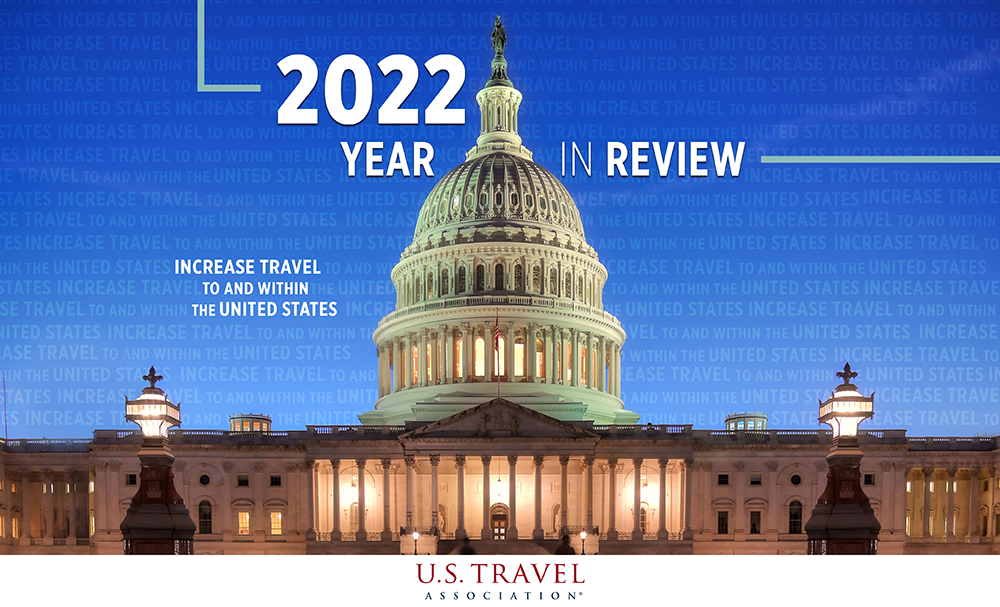
Two themes dominated the state of the industry in 2022: Pent-up travel demand and ongoing recession fears coupled with economic concerns.
Pent-up demand continued to soar, and travelers’ desire to make up for lost travel experiences helped to largely recover the domestic leisure sector to pre-pandemic levels. The summer and holiday travel periods showed that inflationary concerns and high travel prices did not dissuade travelers but instead shifted behaviors, such as cutting back on travel distance, trip duration and staying with friends and family instead of paid accommodations.
There was also evidence of pent-up demand for business travel—specifically meetings and events—as the sector began rescheduling postponed events which helped to make gains toward 2019 figures. The industry sees potential for growth in this sector, especially as a ‘new normal’ continues to shape travel patterns (i.e. hybrid work, more flexibility, fewer peak months and the blend of business and leisure travel).
However, the recovery has been uneven. Transient business travel and international travel were sluggish throughout 2022. Business travel and international travel are not expected to return to pre-pandemic levels until 2027 and 2025, respectively.
But there is optimism as we head into 2023. U.S. Travel’s latest forecast indicated that despite the ongoing headwinds—economic concerns, recession fears, a strong U.S. dollar, unstable global economies and long U.S. visitor visa wait times—travel industry growth is expected to remain robust as we head into 2023.

- Diversity Inclusion
- Advisory Panel
- Our Audience
- Private Tourism Academies
- Tourism Ambassador Training
- Destination Training
- Tourism Keynote Speakers
- Sponsorship
- Business Class Podcast
- Skill & Knowledge
- Product Training
- Our Technology
- Become An Instructor
- Sponsorship Opportunities
- Product Training & Promotion
- Hire Us To Speak

These Six Tourism Trends Will Rule 2022
At the beginning of every year, tourism forecasters the world over put together expensive reports predicting what the future will bring. I read hundreds of predictions and talk with dozens of industry leaders every year. So, what do these speculators think the next few years hold?
Many of the themes are predictable: automation, artificial intelligence, climate crisis, virtual reality and augmented reality, China’s rising power, cryptocurrencies, Zoom, remote work and people fighting for their rights.
RELATED: 2022 Tourism Trends & Outlook
RELATED: U.S. Travel & Tourism Statistics 2020-2021
What do these 2022 Tourism Trends mean?

Tourism Trends 2022.
Expertise is in demand.
Plenty of group leaders, teachers, and novice travel planners found themselves lacking the expertise, resource and knowledge to handle rapidly changing rules, regulations, policies and restrictions. To avoid this sort of stress and frustration, many of these planners (and the organizations they work for) are now insisting that their trips be planned by professional tour operators and travel agencies.
“People are more willing to pay for ‘expertise’ because they don’t want to be on the hook for everything if the boat sinks.” - Keith Snode, Group Travel Odyssey

Empathy and personalization
At the beginning of the pandemic, we saw so many brands talking about ‘being in this together.’ But your messaging needs to go beyond that pat-on-the-back, we-got-this story. Your potential audiences want to envision how your product or service will make their life easier and better as we ease into resuming normal life. They want something they can believe in. Here are a few tips for creating genuine, authentic empathy in your messaging:
Messaging that focuses on solutions is empowering and positive. It tells customers they can do it, and you can help.
Using plain language in your content makes it more believable and relatable. Be sure you’re not hung up on “marketing speak” and technical jargon.
Choose active words that elicit emotions. Inspire. Imagine. Engage.
Think about creating conversations, not just shouting at your customer. In conversations you know the person’s name, you may be able to reference a specific need or discuss a topic you have in common.
Empathy is about walking a mile (or more…) in your customer’s shoes. Watch how they shop and interact with your products. Learn from them. If you can think like your customer, chances are you’ll create a connection.
RELATED: Finding The Right Speaker For Your Meeting
Work from home policies
Working from home has become an efficient way for businesses to operate and manage overhead. Now that people are working from home, it will never go back to the way it used to be; geographic requirements around talent acquisition will loosen.
Income and economic resources have shifted from city centers to the suburbs & rural areas. This brings added opportunity for those businesses who see this as a target audience.
RELATED FREE COURSE: Work Better/Live Happier - Working From Home Effectively
Price compression
Price Compression is an explanation for market bubbles. It’s a pinch situation. Lower inventories, vendors struggling to recuperate losses, demand spikes, and market uncertainty all converge to drive prices up and options down. Travelers who have very fixed departure dates will feel this more than those who can shift plans to off-peak or shoulder periods.
“We’re seeing so many hotels that remain closed; the other hotels with rooms left to sell can raise their rates. It comes down to basic supply & demand. Demand is there on the domestic front. We’re seeing second tier cities commanding rates that we once only saw in New York City. Add to that - inflation. We’re educating operators to not expect the same rates they saw in 2019. The supply chain is under super-pressure and that honeymoon period is over.” - Robert Miller, TravelAdvocates
Breakdown of traditional education paths
As the pandemic interrupted schooling for millions, new relationships to online learning began to flourish. The weight of student debt and continued class conflict draw people away from the traditional path of college education. We can expect to see a rise in solution-based, on-demand online training, like the courses offered at tourismacademy.org . Training that is more concise, targeted and efficient will lead professional development.
RELATED: Tourism Ambassador Certification
Diversity, Equity, and Inclusion
Many workplaces today focus on DEI instead of D&I. DEI stands for Diversity, equity, and inclusion.
Equity has become just as crucial as D&I in several global companies.
Equity in the workplace refers to fair and impartial processes and outcomes for each individual in the company.
To ensure fair and impartial processes and outcomes, leaders and employers need to be mindful of the challenges, barriers, and advantages at play for everyone at any given point in time.
Equity is the reminder that not everyone starts at the same level playing field, and so swift and vigilant action is paramount to building a fair workplace.
RELATED: The Tourism Academy commitment to Diversity, Equity & Inclusion
In conclusion, the takeaway is simple: travel is evolving. Those who are most nimble and able to adapt quickly will capitalize on market opportunities. Share your thoughts and predictions in the comments below.

Leave a comment
Related articles, tourism academy announces top travel trends for 2023, top 20 tourism keynote topics for inspiring journeys, u.s. travel & tourism statistics 2020-2021.
UN Tourism | Bringing the world closer

share this content
- Share this article on facebook
- Share this article on twitter
- Share this article on linkedin
International Tourism Back to 60% of Pre-Pandemic Levels in January-July 2022
- All Regions
- 26 Sep 2022
International tourism continued to show strong signs of recovery, with arrivals reaching 57% of pre-pandemic levels in the first seven months of 2022.
According to the latest UNWTO World Tourism Barometer , international tourist arrivals almost tripled in January to July 2022 (+172%) compared to the same period of 2021. This means t he sector recovered almost 60% of pre-pandemic levels . The steady recovery reflects strong pent-up demand for international travel as well as the easing or lifting of travel restrictions to date (86 countries had no COVID-19 related restrictions as of 19 September 2022).
UNWTO Secretary-General Zurab Pololikashvili said: “Tourism continues to recover steadily, yet several challenges remain, from geopolitical to economic. The sector is bringing back hope and opportunity for people everywhere. Now is also the time to rethink tourism, where it is going and how it impacts people and planet.”
Now is also the time to rethink tourism, where it is going and how it impacts people and planet
An estimated 474 million tourists travelled internationally over the period, compared to the 175 million in the same months of 2021. An estimated 207 million international arrivals were recorded in June and July 2022 combined, over twice the numbers seen in the same two months last year. These months represent 44% of the total arrivals recorded in the first seven months of 2022. Europe welcomed 309 million of these arrivals, accounting for 65% of the total.
International Tourist Arrivals
Europe and the middle east lead recovery.
Europe and the Middle East showed the fastest recovery in January-July 2022, with arrivals reaching 74% and 76% of 2019 levels respectively. Europe welcomed almost three times as many international arrivals as in the first seven months of 2021 (+190%), with results boosted by strong intra-regional demand and travel from the United States. The region saw particularly robust performance in June (-21% over 2019) and July (-16%), reflecting a busy summer period. Arrivals climbed to about 85% of 2019 levels in July. The lifting of travel restrictions in a large number of destinations also fuelled these results (44 countries in Europe had no COVID-19 related restrictions as of 19 September 2022).
The Middle East saw international arrivals grow almost four times year-on-year in January-July 2022 (+287%). Arrivals exceeded pre-pandemic levels in July (+3%), boosted by the extraordinary results posted by Saudi Arabia (+121%) following the Hajj pilgrimage.
The Americas (+103%) and Africa (+171%) also recorded strong growth in January-July 2022 compared to 2021, reaching 65% and 60% of 2019 levels respectively. Asia and the Pacific (+165%) saw arrivals more than double in the first seven months of 2022, though they remained 86% below 2019 levels, as some borders remained closed to non-essential travel.
Subregions and destinations
Several subregions reached 70% to 85% of their pre-pandemic arrivals in January-July 2022. Southern Mediterranean Europe (-15% over 2019), the Caribbean (-18%) and Central America (-20%) showed the fastest recovery towards 2019 levels. Western Europe (-26%) and Northern Europe (-27%) also posted strong results. In July arrivals came close to pre-pandemic levels in the Caribbean (-5%), Southern and Mediterranean Europe (-6%) and Central America (-8%).
Among destinations reporting data on international arrivals in the first five to seven months of 2022, those exceeding pre-pandemic levels were: the US Virgin Islands (+32% over 2019), Albania (+19%), Saint Maarten (+15%), Ethiopia and Honduras (both +13%), Andorra (+10%), Puerto Rico (+7%), United Arab Emirates and Dominican Republic (both +3%), San Marino and El Salvador (both +1%) and Curaçao (0%).
Among destinations reporting data on international tourism receipts in the first five to seven months of 2022, Serbia (+73%), Sudan (+64%), Romania (+43%), Albania (+32%), North Macedonia (+24%), Pakistan (+18%), Türkiye, Bangladesh and Latvia (all +12%), Mexico and Portugal (both +8%), Kenya (+5%) and Colombia (+2%) all exceeded pre-pandemic levels in January-July 2022.
Tourism spending rises but challenges grow
The ongoing recovery can also be seen in outbound tourism spending from major source markets. Expenditure from France climbed to -12% in January-July 2022 compared to 2019 while spending from Germany rose to -14%. International tourism spending stood at -23% in Italy and -26% in the United States.
Robust performance was also recorded in international passenger air traffic, with a 234% increase in January-July 2022 (45% below 2019 levels) and a recovery of some 70% of pre-pandemic traffic levels in July, according to IATA.
Stronger-than-expected demand has also created important operational and workforce challenges in tourism companies and infrastructure, particularly airports. Additionally, the economic situation, exacerbated by the aggression of the Russian Federation against Ukraine, represents a major downside risk. The combination of increasing interest rates in all major economies, rising energy and food prices and the growing prospects of a global recession as indicated by the World Bank, are major threats to the recovery of international tourism through the remainder of 2022 and 2023. The potential slowdown can be seen in the latest UNWTO Confidence Index, which reflects a more cautious outlook, as well as in booking trends which are showings signs of slower growth.
Tourism Experts Cautiously Confident
On a scale of 0 to 200, the UNWTO Panel of Tourism Experts rated the period May-August 2022 with a score of 125, matching the bullish expectations expressed by the Panel in the May survey for the same 4-month period (124).
Prospects for the remainder of the year are cautiously optimistic. Although above-average performance is expected, tourism experts rated the period September-December 2022 with a score of 111, below the 125 score of the previous four months, showing a downgrade in confidence levels. Almost half of experts (47%) see positive prospects for the period September-December 2022, while 24% expect no particular change and 28% consider it could be worse. Experts also seem confident about 2023, as 65% see better tourism performance than in 2022.
The uncertain economic environment seems to have nonetheless reversed prospects for a return to pre-pandemic levels in the near term. Some 61% of experts now see a potential return of international arrivals to 2019 levels in 2024 or later while those indicating a return to pre-pandemic levels in 2023 has diminished (27%) compared to the May survey (48%). According to experts, the economic environment continues to be the main factor weighing on the recovery of international tourism. Rising inflation and the spike in oil prices results in higher transport and accommodation costs, while putting consumer purchasing power and savings under pressure.
Related links
- Download the News Release in PDF
- World Tourism Barometer (PPT version)
- UNWTO World Tourism Barometer | Volume 20 • Issue 5 • September 2022 | EXCERPT
- Impact of the Russian offensive in Ukraine on international tourism
- UNWTO Tourism Data Dashboard
- World Tourism Day 2022: Rethinking Tourism
Category tags
Related content.
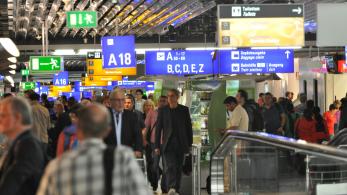
International Tourism to Reach Pre-Pandemic Levels in 2024

International Tourism to End 2023 Close to 90% of Pre-P...

Tourism’s Importance for Growth Highlighted in World Ec...

International Tourism Swiftly Overcoming Pandemic Downturn

- Press Releases
- Press Enquiries
- Travel Hub / Blog
- Brand Resources
- Newsletter Sign Up
- Global Summit
- Hosting a Summit
- Upcoming Events
- Previous Events
- Event Photography
- Event Enquiries
- Our Members
- Our Associates Community
- Membership Benefits
- Enquire About Membership
- Sponsors & Partners
- Insights & Publications
- WTTC Research Hub
- Economic Impact
- Knowledge Partners
- Data Enquiries
- Hotel Sustainability Basics
- Community Conscious Travel
- SafeTravels Stamp Application
- SafeTravels: Global Protocols & Stamp
- Security & Travel Facilitation
- Sustainable Growth
- Women Empowerment
- Destination Spotlight - SLO CAL
- Vision For Nature Positive Travel and Tourism
- Governments
- Consumer Travel Blog
- ONEin330Million Campaign
- Reunite Campaign
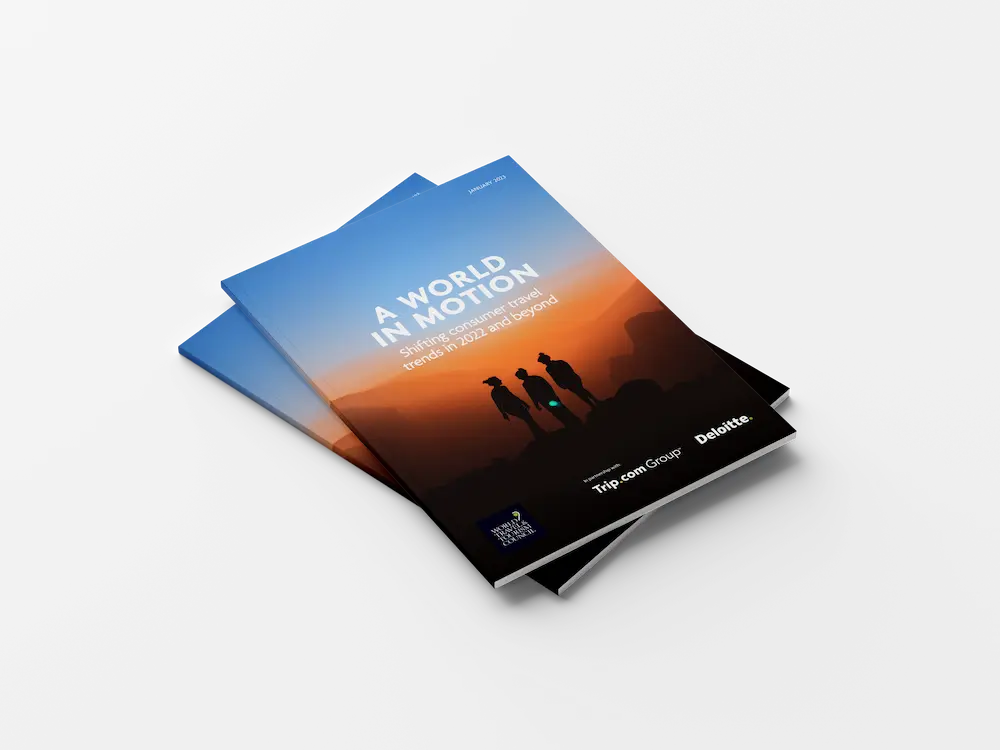
Consumer Trends
A world in motion: shifting consumer travel trends in 2022 and beyond.
- The leading consumer trends report analysing the changing nature of travellers' behaviour and preferences
- Helps businesses understand how consumer travel trends are shifting.
- Supported by Trip.com Group and Deloitte
- Available in English, Chinese, Korean, Japanese
Previous Reports

Trending in Travel: Emerging Consumer Trends
Trending in travel.
Longer Stay, Longer Play
Secondary Destinations
Virus Prevention
Latest Blogs
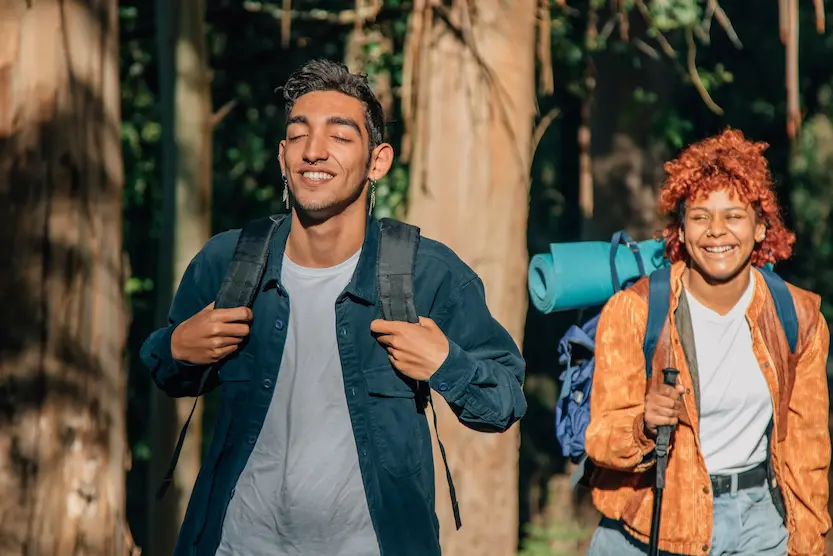
A longer ‘flexcation’ or off the beaten path - which 2022 travel trends will inspire your next adventure?

Trip.com Group is a leading global travel service provider comprising of Trip.com, Ctrip, Skyscanner, and Qunar with the mission "to pursue the perfect trip for a better world".
Deloitte’s transportation, hospitality & services practice provides market insights to help you grow in a technology-driven and rapidly evolving ecosystem. our insights can help you navigate changing consumer behavior and key market trends such as the future of work, digital supply chain, and sustainability..


- Adventure Tours
- Sightseeing Tours
- Transport and Transfer Tours
- Destination
- Booking Engine
- Back Office Tool
- Channel Manager
- Point of Sales
- Agents and Resellers
- Payment Gateway
- Success Stories
- Books and Guide
- Learning Center
- Help Center
- All Categories
- Travel Trends
- Business Management
- Travel Technology
- Distribution
- TrekkSoft Tips
Tourism market trends in 2022
- Tourism Marketing
After the last couple of years of closed borders followed by strict rules regarding social distancing, face masks, and a limited number of tourists per tour, and places in general, 2022 summer carried big expectations for the tourism industry. Countries are removing covid-related entry requirements for travelers. Without restrictions on the country they're arriving from and vaccination status, tourists have easier entry to their destinations and are retaking vacations. And for this, the tourism industry has prepared for the travel demand.

The expectations for 2022
According to the Top 10 Summer European Destinations review, by Allianz Partners , in 2022, travel to Europe will rise 600% over last year as countries re-open for visitation from the U.S. The review showed, in addition to the eagerness of Americans to travel to Europe, the most popular places on their itineraries. The top cities on the American travel list were London, Paris, Dublin, and Reykjavik. The company published in April 2022 analyzed more than 40.000 flight itineraries in the range of 29th May and 5th September.
How was European summer tourism
Before the pandemic, the travel and tourism industry was experiencing its peak in numbers - including the number of international visitors, how much tourists were spending, days of layover, and more. So the expectation for this year's summer was to get closer and closer to the numbers we had in 2019. Eurostat showed that in July 2022, the number of commercial flights in the European Union countries had reached 85% of pre-covid levels, the same as August 2022 (86% of August 2019 figures). In numbers, how was July 2022:
- The United Kingdom received 1.9 million tourists in July, 88% of those came in July 2019;
- Germany had 1.1 million visitors, representing 88% of visitors in 2019;
- Spain had 9.1 million tourists in July. Which means 92% of the arrivals in July 2019;
- France received more than 1.4 million visitors - 98% compared to 2019.
The most significant number of tourists arriving at these destinations has been from the USA.- they represent 85% of arrivals. The forecast for the tourism market is optimistic, and the numbers show that we're approaching pre-pandemic figures. But, the way people are traveling is the same as before covid?
How tourists are traveling in 2022
Travelers are booking their next destination in short search windows Even though travelers are more confident in booking their vacation ahead of time rather than leaving it to the last minute, there are still numerous people looking at trips in the near term. The Traveler Insights Report 2022 , which analyzed the second quarter of Q2, showed that searches up to the maximum of a 90–days window increased more than 5% globally, and searches in the 61- to 90–day window saw the most significant quarter-over-quarter boost at 15%. It could be a direct result of the uncertainties we face during the pandemic, or it could be a consequence of the agility technology offers when buying a flight ticket or booking an activity. The report also showed that most consumers - 53% - feel comfortable booking travel less than one month in advance.
Tourists want to have a meaningful travel experience Traveling has become more than getting to visit new locations. People are searching for purposeful, life-changing experiences. Part of the provided experience it's in the hands of those who guide the tour; they have the chance to amaze and inspire travelers. To learn how to master the art of guiding, read 10 qualities every good tour guide needs .
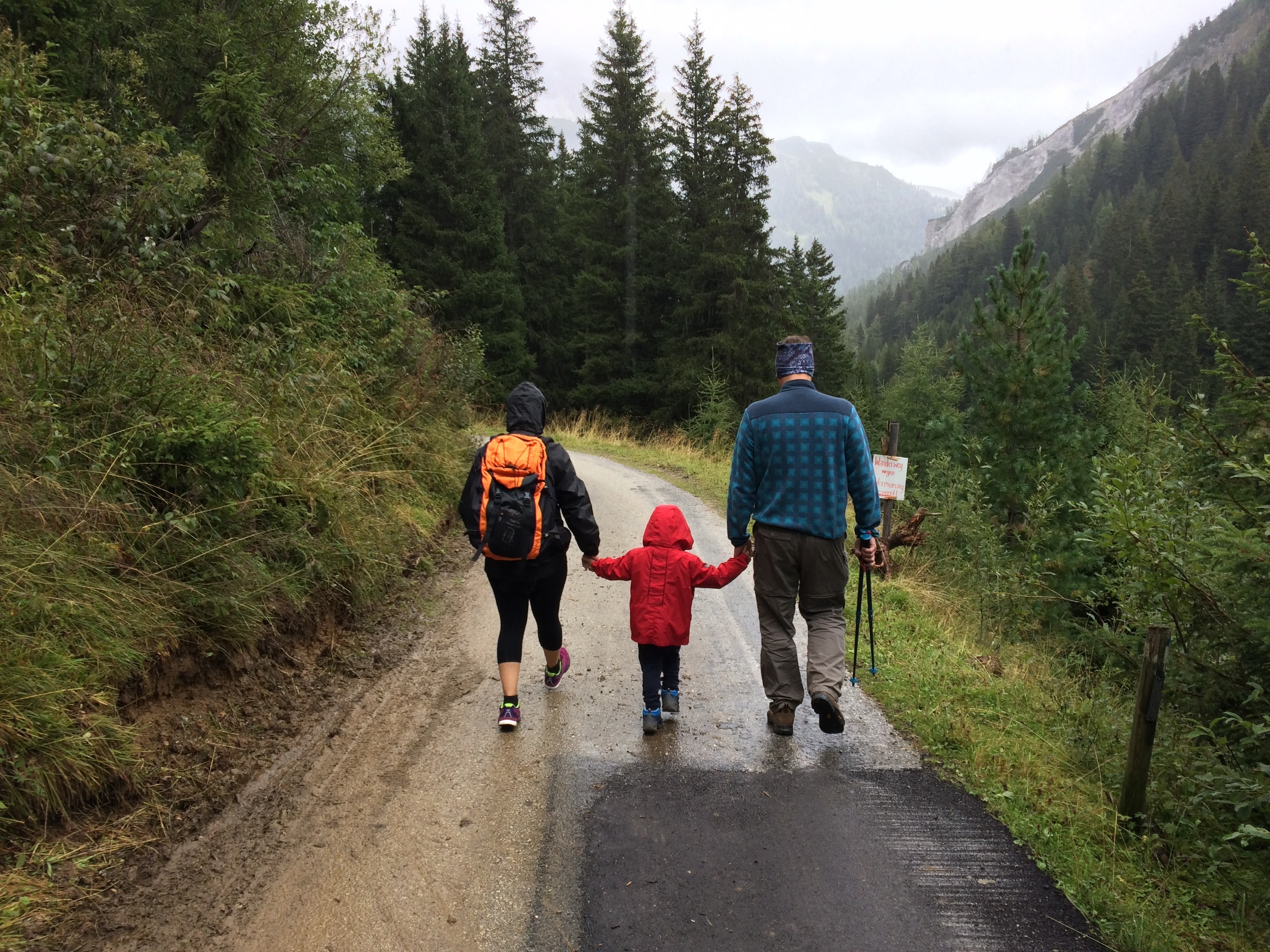
Family traveling is back Even though during the pandemic, the total number of families internationally vacationing declined, the Traveler Insights Report 2022 Q2 revealed that international family travel has recovered to pre-covid numbers. Family groups represent the type of group that spends more per night and bookings.
Solo travel is also on the rise
While we see more and more people taking a family vacation, there is also an increase in people traveling on their own. More popular between Millennials and Gen Z, the reason why people are choosing to travel solo are many; some of them need to see the world at their own pace and the feeling of freedom and independence. The online searches for the term 'solo travel' increased by 267% from December 2020 to April 2022 , so it might be only the beginning of a new major type of traveler.
Tourists want to see inclusive travel
As the travel industry continues to get back on its feet, the importance of offering services for everyone equally and a commitment to inclusion and diversity has become a must for most travelers. The Inclusive Travel Insights Report showed that for 92% of consumers, it's essential for travel providers to meet the accessibility needs of all travelers and that 7 out of 10 travelers would choose a destination, lodging, or transportation option that is more inclusive of all types of travelers, even if it's more expensive.
Supporting local culture
The Expedia Group survey showed that 6 out 10 travelers are interested in learning about travel options supporting locals. Travelers are searching for authentic experiences and finding places that are far from the mainstream. Vacations and traveling have become more than just a trip but a lifetime opportunity for experiencing new things.
Growing demand for adventure destinations
Authentic experiences are rising, and travelers want to live customized experiences and great adventures. The Expedia Group survey showed that the top reasons for upcoming travel during the next 12 months included exploring a new location (32%) and trying new experiences (25%). According to a recent study by Future Market Insights , adventure tourism includes scuba diving, cycling, rafting, trekking, and many other activities that are in a natural environment. The report also revealed that soft adventure is the category more pursued; it represents 60% of the entire adventure tourism market - these soft activities are the ones with a low-risk level. For Europeans, the trend of micro-adventures - hikes and adventures close to home - is also rising. Some outdoor activities most in demand include stand-up paddling, mountain biking, and wing foiling. Technology has a significant responsibility over the increase of adventure activities bookings. The mobile-friendly websites, videos and images of the tours and activities, and price comparisons are helping travelers to know more about the location, the highlights, and the places being offered.
Sustainability in the travel industry
Being outdoors and enjoying nature is one of the main reasons why people travel, and being careful with nature has become a turning point when booking an activity. Some businesses apply CO2 offset, choose sustainable vehicles, or support a local, sustainable project.

How to prepare your business for the new trends
Remember that keeping track of the new trends needs to follow your business goals and key performance indicators (KPIs). To learn more about measuring results, read 6 key performance indicators (KPIs) for tour and activity providers . Offering the greatest traveler experience is a combination of different factors. Keep offering genuine lifetime adventures and listen to your customers' needs to plan your business's next steps. Our free booking conversion guide will help you understand your customers, plus learn how to write killer trip descriptions, how to optimize your call-to-action, and much more.

Posted by Gabriela Cofre Torres


Tour Guides
10 qualities every good tour guide needs
DMO & Resellers
How Fjord Norway brought 110+ suppliers online
TrekkSoft Users
Two ways to easily collet payments
Related Articles
The ultimate booking solution for you
If you're a tour or activity company or a tourism board, we have the perfect plan for your business.
Stay in the Loop
Enhance your travel experience: subscribe to our newsletter for exclusive insights, insider tips, inspiring stories, and unmissable deals that will ignite your wanderlust and help you craft unforgettable journeys.
Submit a guest post

We understand the tour and activity industry and you can rely on our team to onboard your business, introduce you to digital best practice, and guide you to success.
- Status Page
- Developer Docs
2010-2023 TrekkSoft | A TrekkSoft Group company
- Terms & Privacy
Top Travel Industry Trends (2024-2027)

You may also like:
- Key Transportation Industry Trends
- Startups Revitalizing Travel
- Important Restaurant Industry Trends
The travel and tourism industry is growing at an annual rate of 4.41% .
By 2026, the projected market value will be just under $1 billion.
Here are seven trends driving the future of the travel space.
1. Travelers go it alone
One website reports that 25% of all American millennials plan to travel by themselves each year.
Statistics show that the number of people traveling solo increased by 42% even before the pandemic.
According to Travel Market Report , Intrepid Travel is a small-group travel company that plans trips for 75,000 people per year.
Data shows that more than 50% of the travelers booking with them are going alone.
Overseas Adventure Travel, another small-group travel company, has seen such a boom in solo travel that they’ve upped the number of single spaces they have available in 2021, a 76% increase over 2019.
Solo travelers are big on social media too.

2. Travelers crave local experiences
The "experience economy" is huge in the travel industry.
But fewer and fewer people may be settling for commonplace vacation activities in the coming years.
Instead, “consumers [will] pursue authentic experiences , distancing themselves from mainstream tourism providers and venturing into pastimes that feel more meaningful”.
Data insights company AirSage marks this as an emerging trend because “people no longer want boring and conventional travel experiences as much as they used to. Instead, they would rather pay for vacations that are once-in-a-lifetime opportunities”.
Airbnb is betting on this trend.
Their website has offered the opportunity for consumers to book “experiences” since 2016.
But they also added online experiences in 2020 for people who are seeking to connect with locals without leaving their homes.
Other companies are banking their entire business model on this trend.
Withlocals offers “personalized traveling” — the opportunity for travelers to book private tours and activities with locals around the world.

Camping (and glamping) trips have also become a popular way for people to travel while experiencing the local culture and staying safe amidst the pandemic.
Outdoorsy has been called the “Airbnb of RV rentals”.
And their sales exploded to $1 billion in 2020. That’s 400% growth since 2019.
Under Canvas runs seven glamping camps in wilderness locations across the United States aimed at exploring the local landscape and inspiring human connections.
The company reported a “surge" in demand in 2020 and had "strong" advanced bookings during 2021.

3. Travel tech adoption accelerates
As with nearly all businesses, technology is presenting the travel industry with seemingly endless opportunities.
The pandemic has only increased the speed of tech adoption in the travel industry.
A McKinsey survey showed that, because of COVID-19, “companies have accelerated the digitization of their customer and supply-chain interactions and of their internal operations by three to four years".
One example: room service robots.
Two Chinese hotel giants invested in ExcelLand, a manufacturer that already had 3,000 robots in operation.

BTG Homeinnes is looking at these robots as a way to control costs and safeguard guests.
Hotels, airlines, booking sites, and others are using chatbots like never before.
Travelers can chat with providers during every stage of their journey.
And, they won’t (always) feel like they’re talking to a robot. Advances in AI have made this type of communication hassle-free.
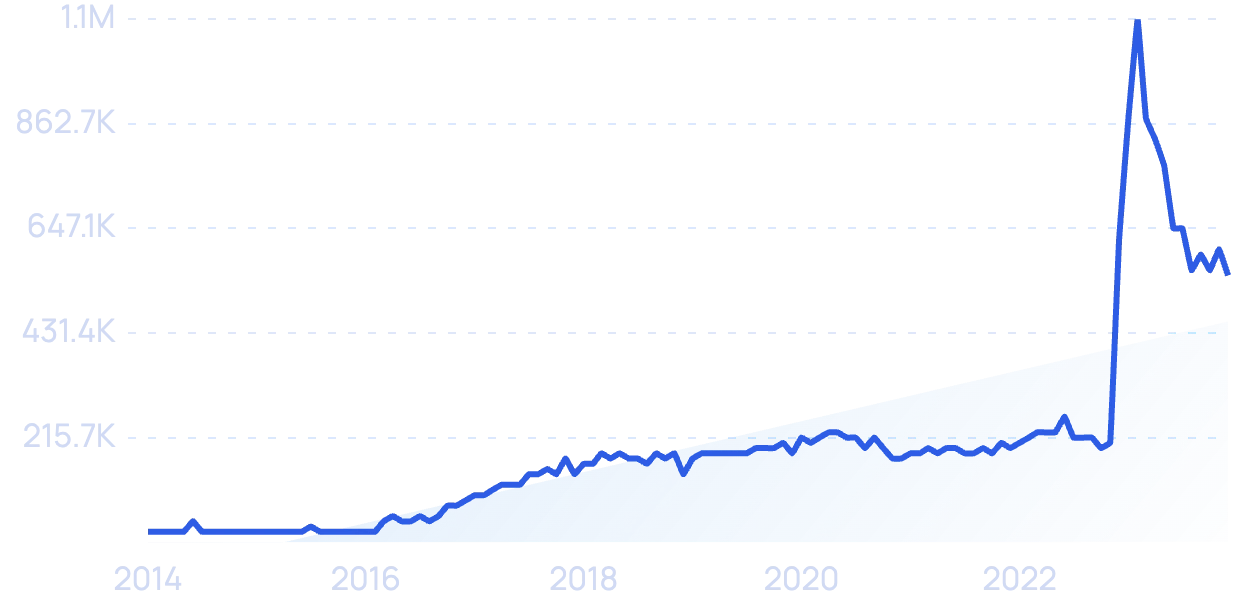
United Airlines has launched an “ Agent on Demand ” service that allows travelers at the airport to video chat with a customer service representative simply by scanning a QR code.
More and more airlines and airports are deploying facial recognition technology.
Corporations and government entities tout this technology as a boon for travel safety.
But many privacy advocates have put a halt to this emerging trend. They warn that this type of surveillance could easily turn dystopian.
With all of this new tech, companies are also continuing to capitalize on an older piece of technology — the smartphone.
Stats show that travelers who book tours and activities on their phone spend 50% more than those who book elsewhere.
4. Consumers blend business and leisure travel
The latest statistics say there are nearly 5 million digital nomads in America.
The concept of being location-independent, traveling and working remotely, has become even more popular since the start of the pandemic.
The hospitality industry is starting to cater specifically to digital nomads.
Aruba is opening its beaches up to travelers who’d like to work remotely, calling the marketing campaign “ One Happy Workation ”.

Visitors can stay for up to 90 days. And do not need any governmental documentation.
Barbados and the Cayman Islands will also let you work remotely from paradise for an extended period of time.
Booking.com reports that the "workation" trend is going strong.
More than 50% of travelers say they would extend their business trip to enjoy personal time at their destination.

In 2020, hotels began catering to locals who needed a quiet place to work.
The Hamilton Hotel in Washington, DC, is just one example. It’s WFH-Work From Hamilton program offers rooms on a 6:00 am to 7:00 pm schedule.
5. The travel industry gets serious about sustainability
Recent data shows that more than half of US travelers believe there aren’t enough options when it comes to sustainable travel .
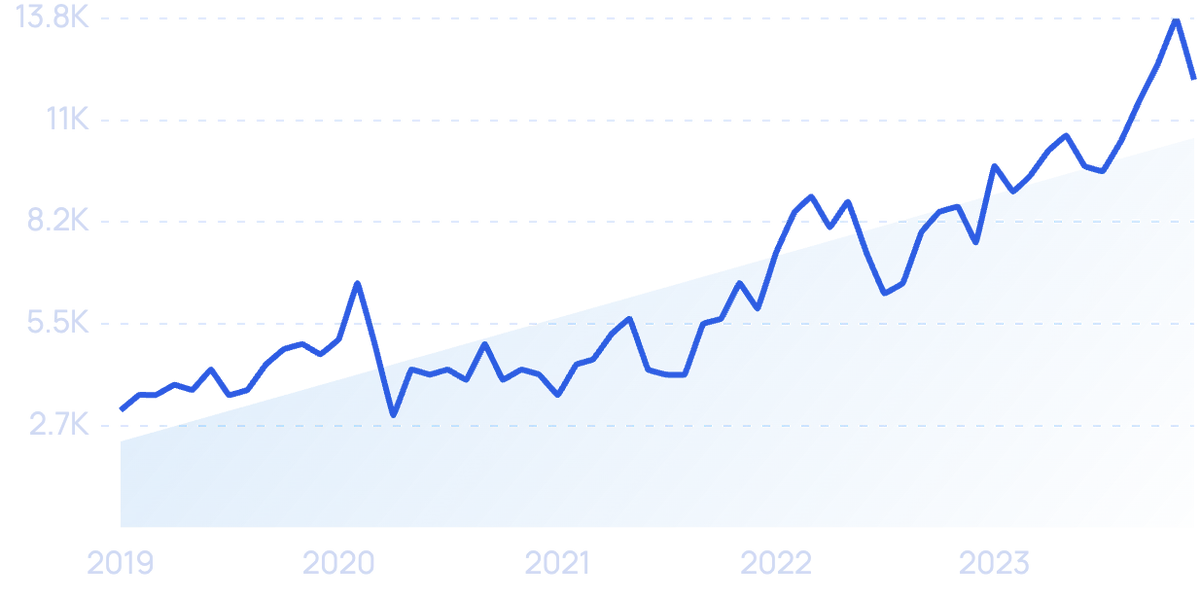
A poll conducted on behalf of Exodus Travels went even deeper into consumers’ attitudes .
- 91% of travelers see the importance of taking ethical trips
- 56% believe in buying souvenirs from local merchants
- 44% want to support local businesses at their destination
Sustainable travel involves minimizing impact on the local cultural environment.
And also taking an eco-friendly approach to the physical environment.
Nearly 70% of travelers say they are more likely to book accommodations if they know the property is planet-friendly.
Many in the travel industry have recently made commitments to preserving the environment.
For example, India-based ITC Hotels Group has LEED certified each of its hotels.
As of 2023, hotels in the state of California will no longer be allowed to provide single-use toiletries in plastic bottles to their guests.

Marriott International has made a pledge to remove these types of plastics from all their hotels, too. But the pandemic has put a temporary stop to that plan.
A recent report from Skift made this summary statement regarding sustainable travel in the future:
“[It’s a] less flashy way of viewing and traveling the world . . . with an emphasis on safety, sustainability, and profound experiences while getting from point A to B without wrecking the climate and local quality of life in the process”.
6. Electric Air Travel Goes Mainstream
Speaking of sustainability, it looks like flying Teslas are finally here.
And they have the potential to make a big impact on at least three large industries:
The aircraft manufacturing industry, with over $200 billion in annual revenue between the top 3 manufacturers alone (Boeing, Airbus and Lockheed).
Commercial airlines, with $838 billion in annual revenue (pre-COVID).
And the ride-hailing and taxi industry, which was valued at $219.68 billion in 2022.

Electric vehicles are cheaper to run , less expensive to maintain , and better for the environment than vehicles powered by conventional fossil fuels.
That’s just as true for aircraft as it is for cars.
When it comes to electric aircraft, there are two main types: fixed-wing airplanes and eVTOLs.
Fixed-wing electric airplanes are just what they sound like. There aren’t any 747-sized electric airliners yet, but smaller commuter planes are in production.
Eviation is leading the charge. This startup produces a 620-mile range, 9-seat commuter plane called the Alice.
According to the company, flying the Alice is dramatically cheaper than a regular internal-combustion powered airplane.
For a 100-mile flight, conventional fuel for a similar-sized Cessna would cost about $400. In Eviation’s electric Alice, it would only be about $10 .
Eviation recently merged with Clermont Aerospace after a $108.5 million valuation.

At the same time, AeroTEC and MagniX are teaming up to retro-fit existing airplanes with electric motors - with similar improvements to efficiency.
There are also electric-hybrid airplanes in development.
For example, the Project 804 by United Technologies.
As well as the Aero by Zunum, a startup backed by Boeing and JetBlue.
And the E-Fan X by Airbus and Rolls-Royce. This project was shut down in April 2021, but only after achieving its three main initial research goals (according to Airbus).
That covers fixed-wing electrics.
The other major kind of electric aircraft is the eVTOL.
eVTOL stands for “electric vertical take-off and landing”.
Non-electric VTOL examples include anything from helicopters to drones and Harrier Jump Jets.
eVTOLs tend to be smaller than their non-electric cousins, and designed for shorter flights across cities.
Some look like passenger-carrying quadcopter drones. While others have a fixed-wing component like regular airplanes.
Search interest in eVTOLs has been exploding lately as startups and major aircraft manufacturers demonstrate new eVTOL models.

In July 2020, Airbus conducted the first public flight of its autonomous 4-seat CityAirbus multicopter eVTOL. The CityAirbus has a projected range of about 60 miles (or 15 minutes).

Airbus also has Vahana , in development by its Silicon Valley innovation arm, Acubed .
For its part, Boeing’s Aurora Flight Sciences has been developing solutions for an air-taxi service in partnership with Uber. Including an autonomous electric passenger air vehicle.
Separately, Boeing is also reportedly partnering with Porsche to develop another eVTOL.
And Tokyo-based “flying car” manufacturer SkyDrive raised a series B of 3.9 billion yen (about $37 million) and conducted its first public manned demonstration of the SkyDrive SD-03.
The SD-03 is the world’s smallest eVTOL, requiring only as much space on the ground as 2 parked cars.
That small footprint is one of the main advantages eVTOLs have over traditional fossil-fuel powered VTOLs like helicopters.
eVTOLs like the ones mentioned above use multiple smaller electric motors with rotors spread out across the aircraft. Whereas a typical helicopter uses one main internal-combustion engine with two huge rotors stacked above. (Plus a smaller one in the tail.)
eVTOLs’ multi-motor design is called a “distributed electric propulsion” (DEP) system.
DEP systems have numerous advantages. They make piloting easier, reduce the footprint required for take-off and landing, and increase safety through redundancy (if one motor fails, there may be 7 more still running).
They also reduce noise emissions, as the rotors don’t have to spin as fast.
Noise and vibrations within the cabin are lower as well.
Thanks to these advantages, dozens of eVTOL manufacturers are currently vying to capture a share of the nascent “urban air mobility” market: eVTOLs used to fly over traffic.
Germany, Holland, Belgium, France, Mexico, and Brazil have all been experimenting with urban air mobility initiatives.
But with all those benefits, why hasn’t electric air travel caught on before?
Two words: energy density.
In other words, the amount of stored energy in one pound of “fuel” — whether gas, diesel, kerosene or batteries.
Currently, conventional fossil fuels have more energy density than batteries. That’s why electric cars are generally heavier than their gas-powered counterparts. They have to be, in order to store enough power.
For aircraft, this added weight poses an obvious problem.
But it’s a problem we’re getting closer to solving.
Tesla CEO Elon Musk has said that an energy density of 400 Wh/kg (watt-hours per kilogram) is the crossover point for lithium-ion batteries to beat kerosene jet fuel. Once battery technology reaches that level, the sky’s the limit for electric aircraft.
Today, the energy density of industry-leading Tesla batteries is currently about 260 Wh/kg. (Up from 124 Wh/kg in 2007.)
So when might we get to 400 Wh/kg?
Very soon, according to Musk.
(Though he has also said that Tesla has no near-term plans to make electric aircraft.)
That’s it for the top seven trends driving the travel and tourism industry forward into 2024 and beyond.
Through these trends, we can see a dynamic relationship between the travel industry and consumers.
It’s a push-and-pull that’s sure to continue in 2025 and companies that can adapt quickly to the changing wants and needs of travelers are the best suited for future success.
Find Thousands of Trending Topics With Our Platform

+1-315-215-1633

- Industries Healthcare Information Technology & Semiconductors Machinery & Equipment Aerospace & Defence Chemicals & Materials Food & Beverages Agriculture Energy & Power Consumer Goods Automotive & Transportation
- Services Consulting Services Tailored Insights Emerging Technologies Syndicated Market Reports Competitive Intelligence Customer Research Market Intelligence Industry Development
Tourism Market

Tourism Market Size By Travel Days (Within 7 Days, More Than 15 Days, and 7-15 Days), By Travel Type (Business Spending and Leisure Spending), Regions, Global Industry Analysis, Share, Growth, Trends, and Forecast 2022 to 2030
- Report ID: TBI-13245
- Published Date: Jan, 2023
- Category: Consumer Goods
- Format: PDF
Buy @ $4700.00 Request Sample PDF
- Table of Content
- Market Segmentation
Methodology
- Request Sample PDF
The global tourism market is expected to reach USD 16.9 Trillion by 2030, at a CAGR of 5.4% during the forecast period 2022 to 2030. Asia Pacific is expected to grow the fastest during the forecast period.
Market Overview:
Travel may be short-distance, long-distance, domestic, or international. The travel demand is expected to increase significantly over the next few years due to various factors, particularly after the relaxation of travel limitations connected to COVID-19. The different aspects of the broader service sector that meet the wants and needs of people who travel from one part of the world to another are included in the travel business. Sustainable travel, which is predicted to be the future of travel, is projected to have a growing impact on the expansion of the travel and tourist industry. The improvement in accessibility to several isolated but stunning sites as well as the development in disposable income, are the main factors driving the travel and tourism business. The travel and tourist industry has benefited from the robust growth of the general infrastructure and transportation systems. Unique once-in-a-lifetime experiences are becoming more and more popular among millennial tourists. Ecological trips are growing in popularity in this setting. As a result, the global travel and tourism market is expanding faster than before. To diversify their revenue streams, businesses in the travel and tourism industry must provide cutting-edge and distinctive travel experiences, such as immersive tours.
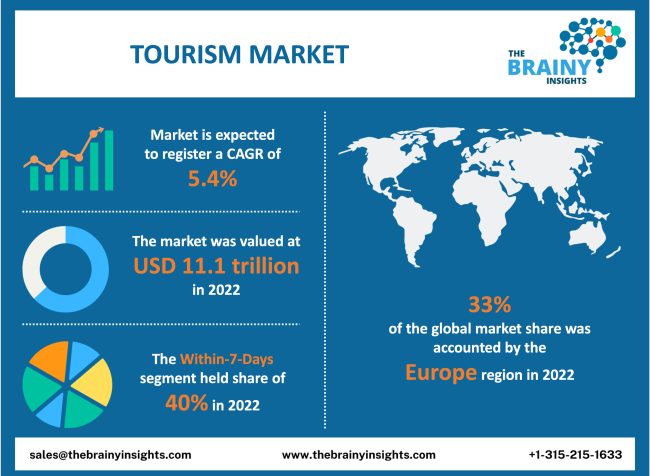
Get an overview of this study by requesting a free sample
Recent Development
- Hilton Worldwide Holdings Inc. made intentions to increase its presence in the Caribbean and Latin America public in August 2022. By the end of 2022, the business anticipates opening its 200th hotel in the area. The company also inked 15 new development partnerships. It announced intentions to open 15 further hotels in the second half of 2022, increasing the total number of projects in its pipeline to 105, totalling almost 15,750 rooms.
- On Unguja, the largest island in Zanzibar, RIU debuted the Riu Jambo, its second hotel, in June 2022. With a total of 461 rooms, it is a 4-star, 24-hour all-inclusive hotel.
Market Dynamics:
Increasing Government Initiatives - Emerging countries benefit greatly from health tourism's financial output, which enables them to improve their healthcare infrastructure. Public authorities have responded by increasing their participation in travel and tourist websites in favour of healthcare services. For instance, the Thai government released the criteria for issuing smart visas to professionals or business owners seeking to start new ventures in February 2018. This announcement may help international health tourism service providers expand their operations in Thailand.
Restraints:
Rise in Cost- However, one of the main reasons that would impede market growth and further complicate the expansion of the tourism market over the forecast period is the rise in the cost of research and development activities. The development of the cultural tourist business will be further hampered by the strict rules put in place by the authorities in response to the impact of COVID-19.
Opportunities:
Promotions by the government - To draw in a variety of travellers from all over the world, governments and organisations like the World Tourism Organization (UNWTO) are promoting tourism. The global tourism market is expanding as a result of these measures. The emerging notion of adventure tourism is driving the whole tourism market. Furthermore, a recent development in the global tourism industry is medical tourism . The notable price differences between medical procedures in various nations drive the global trend of medical tourism. International sporting events also drive the global tourism business. Sports events like the FIFA World Cup 2014, the London Olympics 2012, and the ICC World Cup 2011 attract travellers.
Challenges:
Several Risks Associated - When a person is travelling to another country, there are several risks associated with it, such as; contracting disease, robbery, legal issues etc. Furthermore, there are several language barriers which also challenge the market’s growth over the forecast period.
Regional segmentation analysis:
The regions analyzed for the market include North America, Europe, South America, Asia Pacific, the Middle East, and Africa. Asia Pacific emerged as the largest market for the global tourism market, with a 40% share of the market revenue in 2022.
Asia Pacific currently dominates tourism with a 40% market revenue share in 2022. China and India are the two most powerful nations in the region. The developing BRICS nations are a focus for international tourism and travel companies. In China, the travel and tourism sector is expanding. Tourism industry participants worldwide should benefit financially from inbound and outbound tourism to growing Asia-Pacific nations. Thailand, Japan, Singapore, Vietnam, Indonesia, Malaysia, the Philippines, and South Korea are the most popular travel destinations. After the pandemic's peak, there has been a persistent trend toward ecotourism, emphasising conservation, adventure travel, and health and wellness tours.
Europe is expected to witness the fastest growth during the forecast period. To increase tourism, important government agencies in the area are working with specialised tourism businesses and other government agencies. This is a significant factor influencing the European travel and tourism industry globally.
Europe Region Tourism Market Share in 2022 - 33%
www.thebrainyinsights.com
Check the geographical analysis of this market by requesting a free sample
Travel Days Analysis:
The travel days segment is divided into within 7 days, more than 15 days, and 7-15 days. The within 7 days segment dominated the market, with a market share of around 40% in 2022. The travel days are usually 7 days. As people have their professional responsibilities so they cant expand their travelling days to more than 7, which adds impetus to the segment’s growth.
Travel Type Analysis:
The travel type segment is divided into business spending and leisure spending. Over the forecast period, the business spending segment is expected to grow at the fastest CAGR of 5.9%. Most of the businesses offer travelling facilities to their employees, adding impetus to the segment’s growth.
List of Key Market Players:
- Austin Adventures, Inc.
- Butterfield & Robinson Inc.
- G Adventures
- Geographic Expeditions Inc.
- Intrepid Group, ltd.
- Mountain Travel Sobek
- Discovery Nomads
- Row Adventures
- Cox & Kings Ltd.
Report Description:
Frequesntly Asked Questions
What is the market size of the global tourism market.
As per The Brainy Insights, the size of the tourism market was valued at USD 11.1 Trillion in 2022 to USD 16.9 Trillion by 2030.
What is the market growth rate of the global tourism market?
The global tourism market is growing at a CAGR of 5.4% during the forecast period 2022-2030.
Which region dominates the global tourism market?
Asia Pacific currently emerged as the largest market for Tourism.
Who are the key players in the global tourism market?
Key players in the Tourism market are Austin Adventures, Inc., Butterfield & Robinson Inc., G Adventures, Geographic Expeditions Inc., Intrepid Group, ltd., Mountain Travel Sobek, Discovery Nomads, Row Adventures, Tui Group, and Cox & Kings Ltd.
Get Your Report Customized
- Further segmentation of the market on the basis of type, application, end use, product, technology, method, process and any other segment depending on the market
- Segmentation on the basis of any specific country or region
- Any segment can be classified on the basis of application
- Application segment can be further divided on the basis of companies
- The companies profiled are not limited, we can incorporate additional companies of your choice
- We can split the company market share on the basis of product, application and region
- Report can be prepared for any specific country/region/segment
- Customers can be added on the basis of regions and countries
1. Introduction 1.1. Objectives of the Study 1.2. Market Definition 1.3. Research Scope 1.4. Currency 1.5. Key Target Audience 2. Research Methodology and Assumptions 3. Executive Summary 4. Premium Insights 4.1. Porter’s Five Forces Analysis 4.2. Value Chain Analysis 4.3. Top Investment Pockets 4.3.1. Market Attractiveness Analysis By Travel Days 4.3.2. Market Attractiveness Analysis By Travel Type 4.3.3. Market Attractiveness Analysis By Region 4.4. Industry Trends 5. Market Dynamics 5.1. Market Evaluation 5.2. Drivers 5.2.1. Increasing Government Initiatives 5.3. Restraints 5.3.1. Rise in Cost 5.4. Opportunities 5.4.1. Promotions by government 5.5. Challenges 5.5.1. Several Risks Associated 6. Global Tourism Market Analysis and Forecast, By Travel Days 6.1. Segment Overview 6.2. Within 7 Days 6.3. More Than 15 Days 6.4. 7-15 Days 7. Global Tourism Market Analysis and Forecast, By Travel Type 7.1. Segment Overview 7.2. Business Spending 7.3. Leisure Spending 8. Global Tourism Market Analysis and Forecast, By Regional Analysis 8.1. Segment Overview 8.2. North America 8.2.1. U.S. 8.2.2. Canada 8.2.3. Mexico 8.3. Europe 8.3.1. Germany 8.3.2. France 8.3.3. U.K. 8.3.4. Italy 8.3.5. Spain 8.4. Asia-Pacific 8.4.1. Japan 8.4.2. China 8.4.3. India 8.5. South America 8.5.1. Brazil 8.6. Middle East and Africa 8.6.1. UAE 8.6.2. South Africa 9. Global Tourism Market-Competitive Landscape 9.1. Overview 9.2. Market Share of Key Players in Global Tourism Market 9.2.1. Global Company Market Share 9.2.2. North America Company Market Share 9.2.3. Europe Company Market Share 9.2.4. APAC Company Market Share 9.3. Competitive Situations and Trends 9.3.1. Travel Days Launches and Developments 9.3.2. Partnerships, Collaborations, and Agreements 9.3.3. Mergers & Acquisitions 9.3.4. Expansions 10. Company Profiles 10.1. Austin Adventures, Inc. 10.1.1. Business Overview 10.1.2. Company Snapshot 10.1.3. Company Market Share Analysis 10.1.4. Company Travel Days Portfolio 10.1.5. Recent Developments 10.1.6. SWOT Analysis 10.2. Butterfield & Robinson Inc 10.2.1. Business Overview 10.2.2. Company Snapshot 10.2.3. Company Market Share Analysis 10.2.4. Company Travel Days Portfolio 10.2.5. Recent Developments 10.2.6. SWOT Analysis 10.3. G Adventures 10.3.1. Business Overview 10.3.2. Company Snapshot 10.3.3. Company Market Share Analysis 10.3.4. Company Travel Days Portfolio 10.3.5. Recent Developments 10.3.6. SWOT Analysis 10.4. Geographic Expeditions Inc. 10.4.1. Business Overview 10.4.2. Company Snapshot 10.4.3. Company Market Share Analysis 10.4.4. Company Travel Days Portfolio 10.4.5. Recent Developments 10.4.6. SWOT Analysis 10.5. Intrepid Group, ltd. 10.5.1. Business Overview 10.5.2. Company Snapshot 10.5.3. Company Market Share Analysis 10.5.4. Company Travel Days Portfolio 10.5.5. Recent Developments 10.5.6. SWOT Analysis 10.6. Mountain Travel Sobek 10.6.1. Business Overview 10.6.2. Company Snapshot 10.6.3. Company Market Share Analysis 10.6.4. Company Travel Days Portfolio 10.6.5. Recent Developments 10.6.6. SWOT Analysis 10.7. Discovery Nomads 10.7.1. Business Overview 10.7.2. Company Snapshot 10.7.3. Company Market Share Analysis 10.7.4. Company Travel Days Portfolio 10.7.5. Recent Developments 10.7.6. SWOT Analysis 10.8. Row Adventures 10.8.1. Business Overview 10.8.2. Company Snapshot 10.8.3. Company Market Share Analysis 10.8.4. Company Travel Days Portfolio 10.8.5. Recent Developments 10.8.6. SWOT Analysis 10.9. Tui Group 10.9.1. Business Overview 10.9.2. Company Snapshot 10.9.3. Company Market Share Analysis 10.9.4. Company Travel Days Portfolio 10.9.5. Recent Developments 10.9.6. SWOT Analysis 10.10. Cox & Kings Ltd. 10.10.1. Business Overview 10.10.2. Company Snapshot 10.10.3. Company Market Share Analysis 10.10.4. Company Travel Days Portfolio 10.10.5. Recent Developments 10.10.6. SWOT Analysis
List of Table
1. Global Tourism Market, By Travel Days, 2019-2030 (USD Trillion)
2. Global Within 7 Days, Tourism Market, By Region, 2019-2030 (USD Trillion)
3. Global More Than 15 Days, Tourism Market, By Region, 2019-2030 (USD Trillion)
4. Global 7-15 Days, Tourism Market, By Region, 2019-2030 (USD Trillion)
5. Global Tourism Market, By Travel Type, 2019-2030 (USD Trillion)
6. Global Business Spending, Tourism Market, By Region, 2019-2030 (USD Trillion)
7. Global Leisure Spending, Tourism Market, By Region, 2019-2030 (USD Trillion)
8. North America Tourism Market, By Travel Days, 2019-2030 (USD Trillion)
9. North America Tourism Market, By Travel Type, 2019-2030 (USD Trillion)
10. U.S. Tourism Market, By Travel Days, 2019-2030 (USD Trillion)
11. U.S. Tourism Market, By Travel Type, 2019-2030 (USD Trillion)
12. Canada Tourism Market, By Travel Days, 2019-2030 (USD Trillion)
13. Canada Tourism Market, By Travel Type, 2019-2030 (USD Trillion)
14. Mexico Tourism Market, By Travel Days, 2019-2030 (USD Trillion)
15. Mexico Tourism Market, By Travel Type, 2019-2030 (USD Trillion)
16. Europe Tourism Market, By Travel Days, 2019-2030 (USD Trillion)
17. Europe Tourism Market, By Travel Type, 2019-2030 (USD Trillion)
18. Germany Tourism Market, By Travel Days, 2019-2030 (USD Trillion)
19. Germany Tourism Market, By Travel Type, 2019-2030 (USD Trillion)
20. France Tourism Market, By Travel Days, 2019-2030 (USD Trillion)
21. France Tourism Market, By Travel Type, 2019-2030 (USD Trillion)
22. U.K. Tourism Market, By Travel Days, 2019-2030 (USD Trillion)
23. U.K. Tourism Market, By Travel Type, 2019-2030 (USD Trillion)
24. Italy Tourism Market, By Travel Days, 2019-2030 (USD Trillion)
25. Italy Tourism Market, By Travel Type, 2019-2030 (USD Trillion)
26. Spain Tourism Market, By Travel Days, 2019-2030 (USD Trillion)
27. Spain Tourism Market, By Travel Type, 2019-2030 (USD Trillion)
28. Asia Pacific Tourism Market, By Travel Days, 2019-2030 (USD Trillion)
29. Asia Pacific Tourism Market, By Travel Type, 2019-2030 (USD Trillion)
30. Japan Tourism Market, By Travel Days, 2019-2030 (USD Trillion)
31. Japan Tourism Market, By Travel Type, 2019-2030 (USD Trillion)
32. China Tourism Market, By Travel Days, 2019-2030 (USD Trillion)
33. China Tourism Market, By Travel Type, 2019-2030 (USD Trillion)
34. India Tourism Market, By Travel Days, 2019-2030 (USD Trillion)
35. India Tourism Market, By Travel Type, 2019-2030 (USD Trillion)
36. South America Tourism Market, By Travel Days, 2019-2030 (USD Trillion)
37. South America Tourism Market, By Travel Type, 2019-2030 (USD Trillion)
38. Brazil Tourism Market, By Travel Days, 2019-2030 (USD Trillion)
39. Brazil Tourism Market, By Travel Type, 2019-2030 (USD Trillion)
40. Middle East and Africa Tourism Market, By Travel Days, 2019-2030 (USD Trillion)
41. Middle East and Africa Tourism Market, By Travel Type, 2019-2030 (USD Trillion)
42. UAE Tourism Market, By Travel Days, 2019-2030 (USD Trillion)
43. UAE Tourism Market, By Travel Type, 2019-2030 (USD Trillion)
44. South Africa Tourism Market, By Travel Days, 2019-2030 (USD Trillion)
45. South Africa Tourism Market, By Travel Type, 2019-2030 (USD Trillion)
List of Figures
1. Global Tourism Market Segmentation
2. Global Tourism Market: Research Methodology
3. Market Size Estimation Methodology: Bottom-Up Approach
4. Market Size Estimation Methodology: Top-Down Approach
5. Data Triangulation
6. Porter’s Five Forces Analysis
7. Value Chain Analysis
8. Global Tourism Market Attractiveness Analysis By Travel Days
9. Global Tourism Market Attractiveness Analysis By Travel Type
10. Global Tourism Market Attractiveness Analysis By Region
11. Global Tourism Market: Dynamics
12. Global Tourism Market Share By Travel Days (2022 & 2030)
13. Global Tourism Market Share By Travel Type (2022 & 2030)
14. Global Tourism Market Share By Regions (2022 & 2030)
15. Global Tourism Market Share By Company (2021)
This study forecasts global, regional, and country revenue from 2019 to 2030. Brainy Insights has segmented the global tourism market based on the below-mentioned segments:
Global Tourism Market by Travel Days:
- Within 7 Days
- More Than 15 Days
Global Tourism Market by Travel Type:
- Business Spending
- Leisure Spending
Global Tourism Market by Region:
- South Africa
Research has its special purpose to undertake marketing efficiently. In this competitive scenario, businesses need information across all industry verticals; the information about customer wants, market demand, competition, industry trends, distribution channels etc. This information needs to be updated regularly because businesses operate in a dynamic environment. Our organization, The Brainy Insights incorporates scientific and systematic research procedures in order to get proper market insights and industry analysis for overall business success. The analysis consists of studying the market from a miniscule level wherein we implement statistical tools which helps us in examining the data with accuracy and precision.
Our research reports feature both; quantitative and qualitative aspects for any market. Qualitative information for any market research process are fundamental because they reveal the customer needs and wants, usage and consumption for any product/service related to a specific industry. This in turn aids the marketers/investors in knowing certain perceptions of the customers. Qualitative research can enlighten about the different product concepts and designs along with unique service offering that in turn, helps define marketing problems and generate opportunities. On the other hand, quantitative research engages with the data collection process through interviews, e-mail interactions, surveys and pilot studies. Quantitative aspects for the market research are useful to validate the hypotheses generated during qualitative research method, explore empirical patterns in the data with the help of statistical tools, and finally make the market estimations.
The Brainy Insights offers comprehensive research and analysis, based on a wide assortment of factual insights gained through interviews with CXOs and global experts and secondary data from reliable sources. Our analysts and industry specialist assume vital roles in building up statistical tools and analysis models, which are used to analyse the data and arrive at accurate insights with exceedingly informative research discoveries. The data provided by our organization have proven precious to a diverse range of companies, facilitating them to address issues such as determining which products/services are the most appealing, whether or not customers use the product in the manner anticipated, the purchasing intentions of the market and many others.
Our research methodology encompasses an idyllic combination of primary and secondary initiatives. Key phases involved in this process are listed below:
MARKET RESEARCH PROCESS

Data Procurement:
The phase involves the gathering and collecting of market data and its related information with the help of different sources & research procedures.

The data procurement stage involves in data gathering and collecting through various data sources.
This stage involves in extensive research. These data sources includes:
Purchased Database: Purchased databases play a crucial role in estimating the market sizes irrespective of the domain. Our purchased database includes:
- The organizational databases such as D&B Hoovers, and Bloomberg that helps us to identify the competitive scenario of the key market players/organizations along with the financial information.
- Industry/Market databases such as Statista, and Factiva provides market/industry insights and deduce certain formulations.
- We also have contractual agreements with various reputed data providers and third party vendors who provide information which are not limited to:
- Import & Export Data
- Business Trade Information
- Usage rates of a particular product/service on certain demographics mainly focusing on the unmet prerequisites
Primary Research: The Brainy Insights interacts with leading companies and experts of the concerned domain to develop the analyst team’s market understanding and expertise. It improves and substantiates every single data presented in the market reports. Primary research mainly involves in telephonic interviews, E-mail interactions and face-to-face interviews with the raw material providers, manufacturers/producers, distributors, & independent consultants. The interviews that we conduct provides valuable data on market size and industry growth trends prevailing in the market. Our organization also conducts surveys with the various industry experts in order to gain overall insights of the industry/market. For instance, in healthcare industry we conduct surveys with the pharmacists, doctors, surgeons and nurses in order to gain insights and key information of a medical product/device/equipment which the customers are going to usage. Surveys are conducted in the form of questionnaire designed by our own analyst team. Surveys plays an important role in primary research because surveys helps us to identify the key target audiences of the market. Additionally, surveys helps to identify the key target audience engaged with the market. Our survey team conducts the survey by targeting the key audience, thus gaining insights from them. Based on the perspectives of the customers, this information is utilized to formulate market strategies. Moreover, market surveys helps us to understand the current competitive situation of the industry. To be precise, our survey process typically involve with the 360 analysis of the market. This analytical process begins by identifying the prospective customers for a product or service related to the market/industry to obtain data on how a product/service could fit into customers’ lives.

Secondary Research: The secondary data sources includes information published by the on-profit organizations such as World bank, WHO, company fillings, investor presentations, annual reports, national government documents, statistical databases, blogs, articles, white papers and others. From the annual report, we analyse a company’s revenue to understand the key segment and market share of that organization in a particular region. We analyse the company websites and adopt the product mapping technique which is important for deriving the segment revenue. In the product mapping method, we select and categorize the products offered by the companies catering to domain specific market, deduce the product revenue for each of the companies so as to get overall estimation of the market size. We also source data and analyses trends based on information received from supply side and demand side intermediaries in the value chain. The supply side denotes the data gathered from supplier, distributor, wholesaler and the demand side illustrates the data gathered from the end customers for respective market domain.

The supply side for a domain specific market is analysed by:
- Estimating and projecting penetration rates through analysing product attributes, availability of internal and external substitutes, followed by pricing analysis of the product.
- Experiential assessment of year-on-year sales of the product by conducting interviews.
The demand side for the market is estimated through:
- Evaluating the penetration level and usage rates of the product.
- Referring to the historical data to determine the growth rate and evaluate the industry trends
In-house Library: Apart from these third-party sources, we have our in-house library of qualitative and quantitative information. Our in-house database includes market data for various industry and domains. These data are updated on regular basis as per the changing market scenario. Our library includes, historic databases, internal audit reports and archives.
Sometimes there are instances where there is no metadata or raw data available for any domain specific market. For those cases, we use our expertise to forecast and estimate the market size in order to generate comprehensive data sets. Our analyst team adopt a robust research technique in order to produce the estimates:
- Applying demographic along with psychographic segmentation for market evaluation
- Determining the Micro and Macro-economic indicators for each region
- Examining the industry indicators prevailing in the market.
Data Synthesis: This stage involves the analysis & mapping of all the information obtained from the previous step. It also involves in scrutinizing the data for any discrepancy observed while data gathering related to the market. The data is collected with consideration to the heterogeneity of sources. Robust scientific techniques are in place for synthesizing disparate data sets and provide the essential contextual information that can orient market strategies. The Brainy Insights has extensive experience in data synthesis where the data passes through various stages:
- Data Screening: Data screening is the process of scrutinising data/information collected from primary research for errors and amending those collected data before data integration method. The screening involves in examining raw data, identifying errors and dealing with missing data. The purpose of the data screening is to ensure data is correctly entered or not. The Brainy Insights employs objective and systematic data screening grades involving repeated cycles of quality checks, screening and suspect analysis.
- Data Integration: Integrating multiple data streams is necessary to produce research studies that provide in-depth picture to the clients. These data streams come from multiple research studies and our in house database. After screening of the data, our analysts conduct creative integration of data sets, optimizing connections between integrated surveys and syndicated data sources. There are mainly 2 research approaches that we follow in order to integrate our data; top down approach and bottom up approach.

Market Deduction & Formulation: The final stage comprises of assigning data points at appropriate market spaces so as to deduce feasible conclusions. Analyst perspective & subject matter expert based holistic form of market sizing coupled with industry analysis also plays a crucial role in this stage.
This stage involves in finalization of the market size and numbers that we have collected from data integration step. With data interpolation, it is made sure that there is no gap in the market data. Successful trend analysis is done by our analysts using extrapolation techniques, which provide the best possible forecasts for the market.
Data Validation & Market Feedback: Validation is the most important step in the process. Validation & re-validation via an intricately designed process helps us finalize data-points to be used for final calculations.

The Brainy Insights interacts with leading companies and experts of the concerned domain to develop the analyst team’s market understanding and expertise. It improves and substantiates every single data presented in the market reports. The data validation interview and discussion panels are typically composed of the most experienced industry members. The participants include, however, are not limited to:
- CXOs and VPs of leading companies’ specific to sector
- Purchasing managers, technical personnel, end-users
- Key opinion leaders such as investment bankers, and industry consultants
Moreover, we always validate our data and findings through primary respondents from all the major regions we are working on.
Choose License Type
Flexible purchase options.
- Chapters of your choice
- Quantitative Information for Historical & Forecasted Data
- Regional/Country Level Reports
Get in touch with us
Our clients.

Why choose us
Proactive We manage our resources 24/7 to identify issues and address them before they become problems
Quality & Reliability We are committed to providing reliable and highly accurate data with an excellent quality control system
Global Outreach 6 Major regions and 40+ countries level analysis accomplished
Competitive Pricing Our pricing strategy is highly competitive in the market, without compensating on the quality and the timeline of project delivery
Some Facts About The Brainy Insights
Free Customization
Fortune 500 Clients
Free Yearly Update On Purchase Of Multi/Corporate License
Companies Served Till Date
- Asia Briefing
- China Briefing
- ASEAN Briefing
- India Briefing
- Vietnam Briefing
- Silk Road Briefing
- Russia Briefing
- Middle East Briefing
Tourism in China: 2022 Trends and Investment Opportunities
The COVID-19 pandemic continues to impact Chinese tourism, more so because of the country’s zero-Covid policy. New trends have emerged – which has seen a surge in domestic tourism and changing travel preferences among various demographic categories. In this article, we explore how China’s indigenous tourism market is diversifying, successfully catering to the lifestyles of Gen Z and young families, and touch on the prospects for the return of China outbound tourism. We also offer insights for foreign businesses interested in China’s tourism sector and its allied service industries like retail and sustainability.
As more countries open their borders to international tourism, the absence of Chinese visitors is causing more than a little economic pain. From Phuket to Paris, major tourist destinations have relied on an average of 150 million Chinese travelers spending up to US$255 billion yearly on sightseeing. Now three years into the COVID-19 pandemic, many of these destinations are starting to realize th at it will be a while till the Chinese t ourists return. Some analysts believe that this could impose serious economic consequences on affected countries.
Despite the rest of the world moving toward an endemic approach to the virus, China continues to implement a zero-Covid policy. As of August 2022, China has a quarantine system in place for inbound travelers as well as rigorous  measures that get promptly activated in case of outbreaks. Yet, it is precisely such measures that allow Chinese tourists to feel safer when traveling across provinces and have fueled the growth of the country’s domestic tourism industry.
Nevertheless, tourism market data from China in the first quarter of 2022 showed a significant dip when compared to the same period in the previous year . Data from the Ministry of Culture and Tourism, for example, revealed that, during the New Year’s Day and Spring Festival, 52 million and 251 million people traveled across the country between the two holidays , showing a year-on-year decrease of 5.3 percent and 2.0 percent, respectively. This of course can be put down to the resurgence of Covid-19 with multiple regional and global outbreaks due to more infectious variants. However, with the beginning of the summer holiday season, the slowdown appears to have once again reversed as ticket sales are noticeably on the rise. This presents us with a unique opportunity to zoom in on China’s tourism market and explore how it has transformed since the pandemic . We discuss who is the new Chinese traveler, look at destination trends, as well as the types of services required by the tourism market.
The Chinese tourist profile at a glance
Family traveling at its peak .
The pandemic has caused the decline in popularity of destinations previously famous for group travel, a revenue mainstay for the tourism industry. Chinese travelers are instead opting for different plans based on needs and preferences, giving rise to more family vacations, healthcare tours, and research trips. In particular, “parent-child tourism” has gained momentum throughout 2021 and 2022, along with the steady revival of the national tourism industry.
The 2022 Summer Travel Market Trend Report released by Ctrip (one of China’s leading travel companies) showed that family travel packages have reached a peak in the 2022 summer booking spree. In July 2022, the number of family air tickets sold increased by 804 percent, compared to the previous month. Similarly, bookings of family-friendly hotels grew 80 percent, compared to the same period in 2021, and were up by 20 percent from 2019 – most of these bookings being concentrated in four- and five-star hotels.
Moreover, in July, the number of families traveling from Shanghai and Beijing, as well as from other big cities in China, increased significantly compared to previous holiday periods, such as the Labor Day Holiday or the Dragon Boat Festival. The backlog of travel demand from these places was primarily due to the impact of the epidemic response in the first half of the year, which gradually eased at the beginning of summer.
Looking at the preferred travel destinations, families with children in primary or junior high schools prefer island tours to Sanya, Haikou, Qingdao, and Xiamen , among others, largely because of their family-friendly services. These two groups of travelers have also turned their attention to the tours to the northwestern provinces of Qinghai, Gansu, and Xinjiang.
The Ctrip air ticket data also showed that younger travelers were accompanied by more family members. For example, primary and junior high school students travel with 3.5 and 3.2 people in summer vacations, respectively. On the other hand, college students are more independent in their travel habits.
Gen Z: T he online buyers
As Gen Z’s purchasing power increases, travel has become a significant avenue for them to seek leisure and enjoyment. Survey data showed that over half (52.7 percent) of the Gen Z travelers surveyed looked for travel information on social media and short video platforms, including Xiaohongshu, Kuaishou, Weibo, and Bilibili. About 49 percent of those surveyed chose online travel agencies (OTAs) like Trip.com, Qunar, and Meituan. According to the research, just 16.7 percent of the tourists used offline services to obtain information.
As of 2022, prices and budget remained the main deciding factors for Gen Z when planning their tours, followed by other elements such as transit convenience and safety. 62.5 percent of Gen Z use OTAs to book their travel, with official supplier websites coming in second, followed by social media and e-commerce sites like Xiaohongshu, Douyin, and Taobao.
Data also revealed that natural landscapes were the main draw for Gen Z tourists in 2022. Despite higher spending power, these Chinese travelers had little interest in visiting popular retail malls or luxury sites.
Corporate travel
According to data from the Global Business Travel Association (GBTA) , China took the top spot globally for business travel expenditure in 2021. Indeed, following a 38 percent drop in that same category over the previous year, China’s corporate travel expenditure increased by 31.7 percent in 2021 as the local market rebounded – more than doubling the worldwide growth rate.
According to the study, 16.3 percent more Chinese businesses used travel management agencies in 2021 than they did in 2020. In China’s top cities , including Beijing, Shanghai, and Guangzhou, this number increased by 24.6 percent.
By 2024, the business travel industry in China is predicted to recover and reach pre-pandemic levels, with total spending on business travel topping US$400 billion. The strong recovery momentum in China’s business travel industry is reflected in the Trip.com Group’s 2021 performance, with hotel reservations on Trip.Biz (the business-dedicated section of CTrip) increasing by almost triple digits.
China’s latest tourism trends by destination
Peripheral or ‘short-distance’ tourism on the rise .
With the continuous development of leisure tourism in recent years, the short-distance tourism model has gained enough market recognition and respect.
Affected by the pandemic, many people in China still have concerns about the health risks of long-distance traveling. Several primary and secondary schools still restrict the travel of students during long holiday periods, resulting in families preferring to travel short distances and explore nearby landmarks. Local tours, “rediscovering the beauty of the surroundings”, have become popular. new trend as residents gets the opportunity to experience the place where they were born and raised.
The improvement of both tourist facilities and services in the hospitality sector has made it possible for this type of tourism to attract a larger pool of customers.
Rural tourism
Holiday destinations have undergone an evolution from country to the city and back again. Against the background of rural revitalization , the government has appointed a series of “village +” destinations to promote tourism, such as the Yellow River Suji Village and the Jijiadun Ideal Village. Ctrip data shows that the order volume of rural hotels more than doubled in 2021 compared to the previous year, attracting visitors mainly born between the 1980s and the 1970s.
In the past, rural vacations meant spending time between mountains, rivers, and the serene scenery offered by the countryside. Today’s offers are much more diversified, as enterprises combine their business models with sustainable development goals and attract tourists with higher spending capacity.
Cultural products
With the growing enthusiasm of young people for Chinese culture, cultural tourist offers have become more popular.
Various museums, for example, have recently become a hot topic on the search list for nationwide destinations. At the beginning of 2022, the unearthing of cultural relics at the Sanxingdui Ruins site set off a boom in museum tourism. Similarly, the China Grand Canal Museum in Yangzhou (Jiangsu province) has become a popular tourist check-in place, so much so that it attracted a monthly audience of more than 250,000 visitors during its trial operation period alone.
At the same time, the organic integration of traditional folk culture has become more popular, and activities such as temple blessings and intangible cultural heritage experiences, are very popular among tourists. The rural market in northern Anhui, for example, staged wonderful performances , such as Huainan Shouxian drum, Suzhou Sixian Sizhou opera, and Taihe lion lantern , among others, attracting many tourists. Various places in Fujian have carried out splendid, themed activities around the “Fu” culture .
A sense of cultural self-confidence among young Chinese people can be attributed as the main reason for the growth of such cultural destinations and scenic spots – not to be confused with the popular “Red Tourism” .
Closer to nature
The data collected by Ctrip at the beginning of 2022, revealed that natural protected areas and national forest parks appeared in the top five popular scenic spots announced by over 22 cities on the mainland.
Indeed, Chinese travelers are paying increasing attention to nature-immersive destinations. According to the report of Qiaoyou.com, more than half of the app’s users have been to at least one of the first batch of national parks officially announced in October 2021, and 83.6 percent of the surveyed people plan to travel there in the future.
It is worth mentioning that Chinese tourists nowadays engage more with natural destinations through a variety of activities, such as photography, acquiring natural knowledge, exercising, etc. Increasing this skill set has become an important factor in attracting travelers to explore outdoor scenic spots; hiking and camping have become popular new ways to get closer to nature.
Prospects for outbound tourism
According to recent forecasts , a ‘strong wave’ of outbound travel from China will start up again in 2023, returning to its pre-pandemic levels by 2024. Such predictions are backed by plans announced by the country’s aviation regulator, which has issued a five-year development plan , with a strong focus on expanding domestic flights and restoring international air travel by 2025.
Chinese tourists’ interest in overseas destinations has remained attractive though recovery is still a long way off. The Asia-Pacific region remains the most popular with Chinese tourists. Most desired overseas destinations are Southeast Asia, Europe, Russia, and Japan.
The lifting of international border restrictions in China and the incidence of COVID-19 cases in the destination country are key factors shaping Chinese decision-making about outbound travel. Travel patterns to destinations such as Hong Kong and Macao demonstrate how COVID-19 cases and quarantine requirements have an immediate effect on travelers’ decision-making.
Innovation is key to the development of China’s tourism products
Fintech for flexibility .
New payment patterns have been quietly emerging behind the scenes as the travel sector has steadily recovered from the pandemic slowdown. One of the most prominent developments in travel technology in recent years is the growing confluence of finance and travel. Whether it is new payment options offered by travel suppliers, improvements in the flow of funds among tourism market players, or travel agencies launching full-fledged fintech solutions, the way the travel sector does business is rapidly changing.
Aligned with these trends, airlines, hotels, and travel agencies may seek to modify their customer loyalty programs to encourage clients to utilize their specialized services thereby entrenching their position in this high-margin market .
Smart scenic spots
Nearly half of Chinese tourists cited COVID-19 prevention and control measures as the most important factor when planning a trip, according to a survey. Self-guided tours, small group tours, and customized tours with less contact with strangers are preferred. This may accelerate the pace of construction of smart scenic spots.
Through online platforms and the travel app of the scenic spot, tourists can learn about their destination, find information to support travel route planning, book tickets for scenic spots and hotel accommodation, besides online shopping for souvenirs in advance. Such services and digital products allow tourists to be informed before, during , and after their tour is completed, while also enhancing the attraction of scenic spots.
Technology empowers hospitality
With the deepening integration of “Internet +” tourism, information communication technology has become the driving force for tourism development.
With newer applications of the Internet, big data, and artificial intelligence, which will get accelerated in the 5G era, digital technology is being fully integrated into the tourism industry. This has brought changes to tourism supply and consumption, promoting new business models, and higher quality development of the tourism industry overall.
Alibaba, China’s e-commerce and technology behemoth debuted its first robotic hotel, the FlyZoo Hotel, in December 2018. This “hotel of the future” was set up in the company’s hometown, Hangzhou , by Alibaba’s online travel agency (Fliggy) together with other company divisions, including Alibaba A.I. Labs and Alibaba Cloud.
This high-tech hotel’s major goal is to show how artificial intelligence is already changing China’s hospitality sector and how it will motivate other countries’ travel and hospitality sectors to embrace innovation.
FlyZoo Hotel CEO Wang Qun has frequently said in several interviews that the company would keep developing “smart brains” for automated hotels in China as well as more specialized experiences for visitors.
Key takeaways for foreign investors
Retail shopping while traveling .
Retail shopping while traveling is emerging as a popular consumption trend in China. The pop-up store may not be a brand-new concept, but it is making a comeback in the Chinese travel landscape. For instance, in collaboration with China Duty-Free Group, several companies, including SK-II and Clé de Peau Beauté, have opened pop-up shops in Hainan to cater to the demands of customers who have been unable to go abroad due to the epidemic.
Clé de Peau Beauté’s pop-up shop , for instance, has hosted several live-streamed events, and offered exclusive experiences in Sanya (a top-tourist city on the Chinese island of Hainan), including a simulator room, QR codes, and AR mirrors. These features have notably improved the Clé de Peau Beauté pop-up experience, with the live stream attracting a record of 6.4 million impressions and over 700,000 views on Yizhibo.
Meanwhile, an AI skin analyzer, animated shorts, a WeChat mini-program, as well as an AR video game were among the features included at SK-“Social II’s Retail” pop-up store (also located in the Sanya International Duty-Free Shopping Complex).
Travel companies need to adapt
There is a clear desire to travel, and a huge pent-up demand for outbound travel. At the same time, despite intermittent COVID-19 outbreaks, interest in domestic travel has continued to increase – particularly whenever the epidemic situation stabilizes. In this fluid market scenario, travel agencies can plan for demand spikes while also considering changing travel tastes. To better serve tourists, travel agencies may need to become more flexible with their strategies. Given frequent changes in legislation, travel agencies can be more accommodating when clients adjust their plans. Additionally, they may concentrate on nearby communities that are accessible by car, diversify their product offerings to adapt to demand changes, and foster loyalty by paying closer attention to customer happiness and the distinctiveness of the tourism experience. Travel agencies may also utilize digital channels to communicate with consumers and can customize content and presentation.
Analyzing trends in the tourism industry suggests that China’s domestic market has much-untapped potential. Various opportunities exist for the travel industry to diversify its product offerings, such as through curated and immersive experiences or by responding to changing customer needs. In turn, tourism marketing strategies can incorporate insights from the dynamic experiences of the domestic market during the pandemic — enabling the domestic operating model to achieve long-term inclusive and sustainable growth.
Gen Z is the new decision-makers
Consumers no longer primarily travel for shopping. Gen Z in China, which dominates the upcoming generation of tourists, seeks different experiences when traveling. Hiking, low-altitude flying, and water sports are just a few of the trending activities researched by this new group of travelers, according to recent data .
This shows that tourists now seek more than a pleasant travel experience. They are typically more specific about their travel goals and eager to meet individuals who share their interests. This opens space for companies to engage in the digital market and invest in social media apps that feature tools to connect with travel and tourism. Additionally, most young travelers looking for a variety of unique experiences. Since social media content is how many choose their specific destinations or travel activities, Gen Z tourists in China are eager to replicate some of the experiences they encounter on these apps. Therefore, the way to win these consumers’ hearts, particularly in this demographic group, is to offer experiences (rather than products) – which may have more personal value.
China Briefing is written and produced by Dezan Shira & Associates . The practice assists foreign investors into China and has done so since 1992 through offices in Beijing, Tianjin, Dalian, Qingdao, Shanghai, Hangzhou, Ningbo, Suzhou, Guangzhou, Dongguan, Zhongshan, Shenzhen, and Hong Kong. Please contact the firm for assistance in China at [email protected] . Dezan Shira & Associates has offices in Vietnam , Indonesia , Singapore , United States , Germany , Italy , India , and Russia , in addition to our trade research facilities along the Belt & Road Initiative . We also have partner firms assisting foreign investors in The Philippines , Malaysia , Thailand , Bangladesh .
- Previous Article China to Further Extend the Additional VAT Deduction Policy for the Services Industry
- Next Article Camping and Outdoor Activity – Tapping into China’s Hottest New Travel Trend
Our free webinars are packed full of useful information for doing business in China.
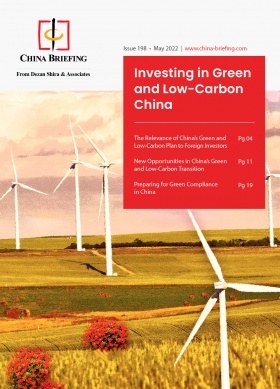
DEZAN SHIRA & ASSOCIATES
Meet the firm behind our content. Visit their website to see how their services can help your business succeed.
Want the Latest Sent to Your Inbox?
Subscribing grants you this, plus free access to our articles and magazines.
Get free access to our subscriptions and publications
Subscribe to receive weekly China Briefing news updates, our latest doing business publications, and access to our Asia archives.

Your trusted source for China business, regulatory and economy news, since 1999.

Subscribe now to receive our weekly China Edition newsletter. Its free with no strings attached.
Not convinced? Click here to see our last week's issue.

Search our guides, media and news archives
Type keyword to begin searching...
Surge in Adventure Tourism: Four Big Trends in 2024
Jesse Chase-Lubitz , Skift
April 17th, 2024 at 12:00 PM EDT
New data shows that experiences are the leading factor when choosing a destination.
Jesse Chase-Lubitz
The latest consumer spending data from GetYourGuide reveals a surge in demand for unique travel experiences and activities that align with personal passions.
The report analyzes booking data from millions of travelers and highlights a significant shift in travel priorities. Here are the key takeaways:
Experiences Rule
Travelers are prioritizing experiences over traditional sightseeing. Nearly all travelers (90%) plan to spend the same or more on activities in 2024, and experiences are now the leading factor when choosing a destination (reported by 98% of travelers).
Passion Drives Destinations
The hottest travel destinations are no longer just about iconic landmarks. Cities like Fajardo, Puerto Rico (up 419% in bookings by American travelers) and Hoi An, Vietnam (up 284% globally) are experiencing a boom, likely due to their unique cultural offerings and adventure opportunities.
Globally Inspired
Travelers are venturing beyond the usual suspects. This year’s top trending tours include the Sagrada Familia in Barcelona, kayaking through El Yunque Rainforest in Puerto Rico, and even a hot air balloon ride over Interlaken, Switzerland.
The Rise of the Explorer
GetYourGuide identifies a new breed of traveler – the “Explorer” – who spends more on experiences, takes longer trips, and travels more frequently. These high-value vacationers are fueling the experience economy.
Get Skift Research
Skift Research products provide deep analysis, data, and expert research on the companies and trends that are shaping the future of travel.
Have a confidential tip for Skift? Get in touch
Tags: getyourguide , tourism , Travel Experiences , Travel Trends
Photo credit: GetYourGuide Walking Tour in London. Source: GetYourGuide

IMAGES
COMMENTS
Trend 4: Limited Hotel Services. In September, research from American Hotels & Lodging Association (AHLA) revealed that the U.S. hotel industry is likely to finish 2021 with 500,000 fewer jobs than in 2019, and that an additional 1.3 million jobs in restaurants, supply businesses and retail stores supported by hotels are also at risk.
Outlook for 2022. According to the latest UNWTO Panel of Experts, most tourism professionals (61%) see better prospects for 2022. While 58% expect a rebound in 2022, mostly during the third quarter, 42% point to a potential rebound only in 2023. A majority of experts (64%) now expect international arrivals to return to 2019 levels only in 2024 ...
10. Wellness Travel. 11. Longer Trips. 12. Staycation. Conclusion. With travelers' desire for new experiences, the rapid global technological advancements, climate change, and other dynamics, the travel and tourism industry is constantly transforming. Having experienced an all-time high in the past decade, with 2018 recording the highest ...
171. Ana Miminoshvili. By The New York Times. Published Feb. 15, 2022 Updated March 8, 2022. As governments across the world loosen coronavirus restrictions and shift their approach to accepting ...
Globally, travel and tourism's direct contribution to gross domectic product (GDP) was approximately 7.7 trillion U.S. dollars in 2022. This was a, not insignificant, 7.6 percent share of the ...
Report: 2022 Year In Review. Two themes dominated the state of the industry in 2022: Pent-up travel demand and ongoing recession fears coupled with economic concerns. Pent-up demand continued to soar, and travelers' desire to make up for lost travel experiences helped to largely recover the domestic leisure sector to pre-pandemic levels.
RELATED: 2022 Tourism Trends & Outlook. RELATED: U.S. Travel & Tourism Statistics 2020-2021 . What do these 2022 Tourism Trends mean? The travel industry faces a different sort of turbulence than we've become used to. Change is coming at us from every possible direction. Here are just a few of the trends we can expect to see shaking our cages ...
According to the latest UNWTO World Tourism Barometer, international tourist arrivals almost tripled in January to July 2022 (+172%) compared to the same period of 2021. This means t he sector recovered almost 60% of pre-pandemic levels. The steady recovery reflects strong pent-up demand for international travel as well as the easing or lifting ...
The online travel booking platform market alone is projected to grow at a CAGR of 4.91% over the period 2022-2026 to reach $204.81 billion. As for the global ridesharing market, it is expected to ...
The 2022 edition of OECD Tourism Trends and Policies analyses tourism performance and policy trends to support recovery across 50 OECD countries and partner economies. It examines the key tourism recovery challenges and outlook ahead, and highlights the need for co-ordinated, forward-looking policy approaches to set tourism on a path to a more ...
Tourism has been hit hard by the depth and duration of the crisis triggered by the COVID-19 pandemic. Just as the sector was starting to rebound, the economic fallout from Russia's aggression against Ukraine has dealt a fresh blow to recovery prospects. The 2022 edition of OECD Tourism Trends and Policies analyses tourism performance and ...
KIDS RULE OK. One leading trend identified in the 2022 Trend Report from holiday rentals community brand Vrbo is a renewed focus on family travel . Dive into family adventures with Vrbo. "Over ...
A world in motion: shifting consumer travel trends in 2022 and beyond. The leading consumer trends report analysing the changing nature of travellers' behaviour and preferences. Helps businesses understand how consumer travel trends are shifting. Supported by Trip.com Group and Deloitte.
Based on research from its clients, Audley Travel says the travel trends it has identified for 2022 include growing group sizes and increased spend as clients ensure their return to travel is ...
In numbers, how was July 2022: The United Kingdom received 1.9 million tourists in July, 88% of those came in July 2019; Germany had 1.1 million visitors, representing 88% of visitors in 2019; Spain had 9.1 million tourists in July. Which means 92% of the arrivals in July 2019; France received more than 1.4 million visitors - 98% compared to 2019.
The travel and tourism industry is growing at an annual rate of 4.41%. By 2026, the projected market value will be just under $1 billion. Here are seven trends driving the future of the travel space. 1. Travelers go it alone. One website reports that 25% of all American millennials plan to travel by themselves each year.
The global adventure tourism market size was valued at USD 282.1 billion in 2021 and is projected to expand at a compound annual growth rate (CAGR) of 15.2% from 2022 to 2030. The adventure tourism industry witnessed strong growth and related spending due to the increased number of travelers in recent years is driving the market demand
Report can be prepared for any specific country/region/segment. Customers can be added on the basis of regions and countries. Request for Customization. The global tourism market is expected to grow from USD 11.1 Trillion in 2022 to USD 16.9 Trillion by 2030, at a CAGR of 5.4% during the forecast period 2022-2030.
These forecasts are based on the latest data and in-depth analysis of industry trends, available via EIU Viewpoint . ... Saudi sojourns: The Middle East has seen an extremely strong revival in tourism in 2022. International arrivals rose by 287% year on year in January to July 2022, taking them close to 2019 levels. Saudi Arabia,
Tourism Trends: 20 Opportunities for The Tourism Industry in 2024. Tourism trends of 2024: the most significant upcoming tourism trends. So, start impressing your guests and outpace your competitors.
The 2022 Summer Travel Market Trend Report released by Ctrip ... Analyzing trends in the tourism industry suggests that China's domestic market has much-untapped potential. Various opportunities exist for the travel industry to diversify its product offerings, such as through curated and immersive experiences or by responding to changing ...
Travelers are venturing beyond the usual suspects. This year's top trending tours include the Sagrada Familia in Barcelona, kayaking through El Yunque Rainforest in Puerto Rico, and even a hot ...